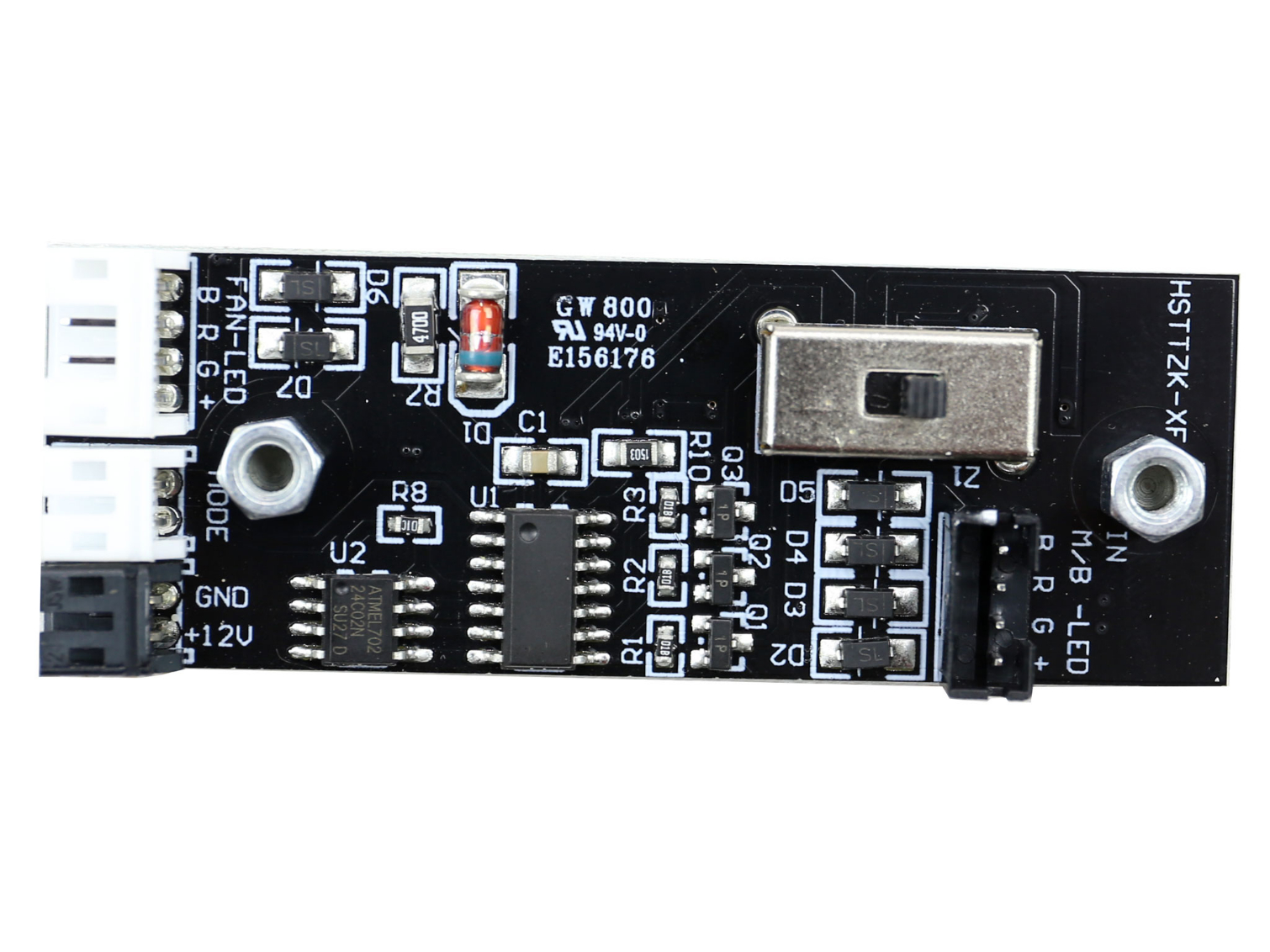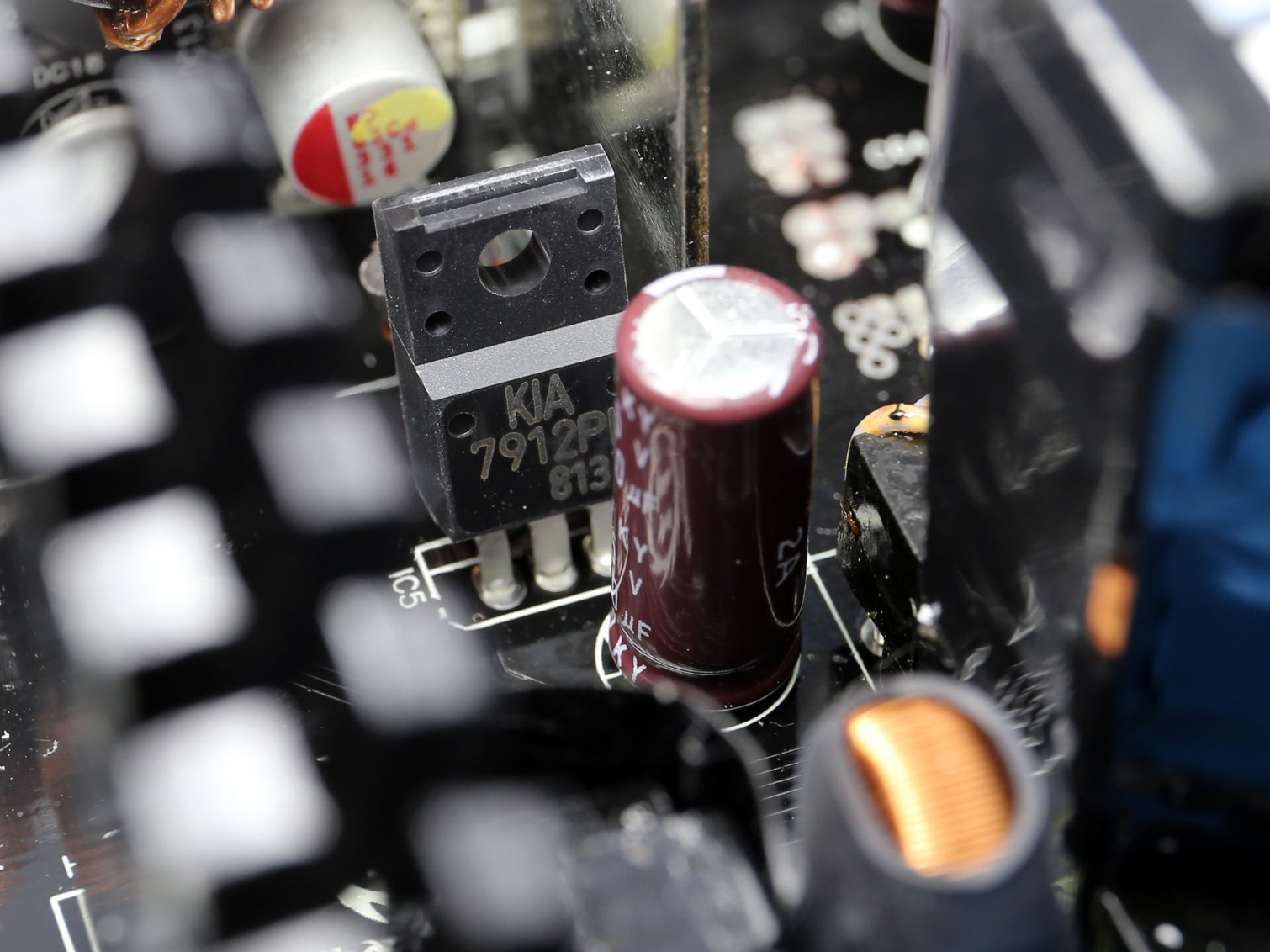Thermaltake Toughpower Grand RGB 850W Gold PSU Review: Going Full RGB
Why you can trust Tom's Hardware
Teardown & Component Analysis
Before proceeding with this page we strongly encourage you to a look at our PSUs 101 article, which provides valuable information about PSUs and their operation, allowing you to better understand the components we're about to discuss.
| General Data | |
|---|---|
| Manufacturer (OEM) | Sirfa / High Power |
| Primary Side | |
| Transient Filter | 4x Y caps, 2x X caps, 2x CM chokes, 1x MOV, 1x Champion CMD02X |
| Inrush Protection | - |
| Bridge Rectifier(s) | 2x GBU1506L (600V, 15A @ 100°C) |
| APFC MOSFETs | 2x Infineon IPA50R140CP (550V, 15A @ 100°C, 0.14Ω) |
| APFC Boost Diode | 1x UnitedSiC UJD06508TS (650V, 8A @ 152°C) |
| Hold-up Cap(s) | 1x Rubycon (400V, 680uF, 2000h @ 105°C, MXH) |
| Main Switchers | 2x Infineon IPA50R140CP (550V, 15A @ 100°C, 0.14Ω) |
| APFC Controller | Infineon ICE3PCS01G |
| LLC Resonant Controller | Champion CM6901X |
| Primary MCU | STC 15W408AS |
| Topology | Primary side: Half-bridge & LLC resonant controller Secondary side: Synchronous rectification & DC-DC converters |
| Secondary Side | |
| +12V MOSFETs | 6x Infineon BSC027N04LS G (40V, 88A @ 100°C, 2.7mΩ) |
| 5V & 3.3V | DC-DC Converters: 6x Infineon BSC0906NS (30V, 40A @ 100°C, 4.5mΩ) PWM Controller: APW7159C |
| Filtering Capacitors | Electrolytics: Nippon Chemi-Con (1-5000 @ 105°C, KZE), Nippon Chemi-Con (4-10,000 @ 105°C, KY), 1x Rubycon (4-10,000 @ 105°C, ZLH) Polymers: Nippon Chemi-Con, FPCAP |
| Supervisor IC | Siti PS224 (OVP, UVP, OCP,SCP, PG) |
| Serial EEPROM | Atmel AT24C02N |
| Fan Model | Thermaltake TT-1425 (Hong Sheng OEM, A1425L12S, 140mm, 12V, 0.30A, 1560 RPM, hydro dynamic bearing) |
| 5VSB Circuit | |
| Rectifiers | 1x PCF P10V45 SBR (45V, 10A) 2x Infineon BSC0906NS (30V, 40A @ 100°C, 4.5mΩ) |
| Standby PWM Controller | Sanken STR-A6069H |
| -12V Circuit | |
| Rectifier | KEC KIA7912PI |
Most OEMs utilize NTC thermistors and bypass relays to suppress high inrush currents. But High Power, for its own reasons, doesn't. As a result, registered inrush currents are very high, applying lots of stress on corresponding electrical infrastructures.
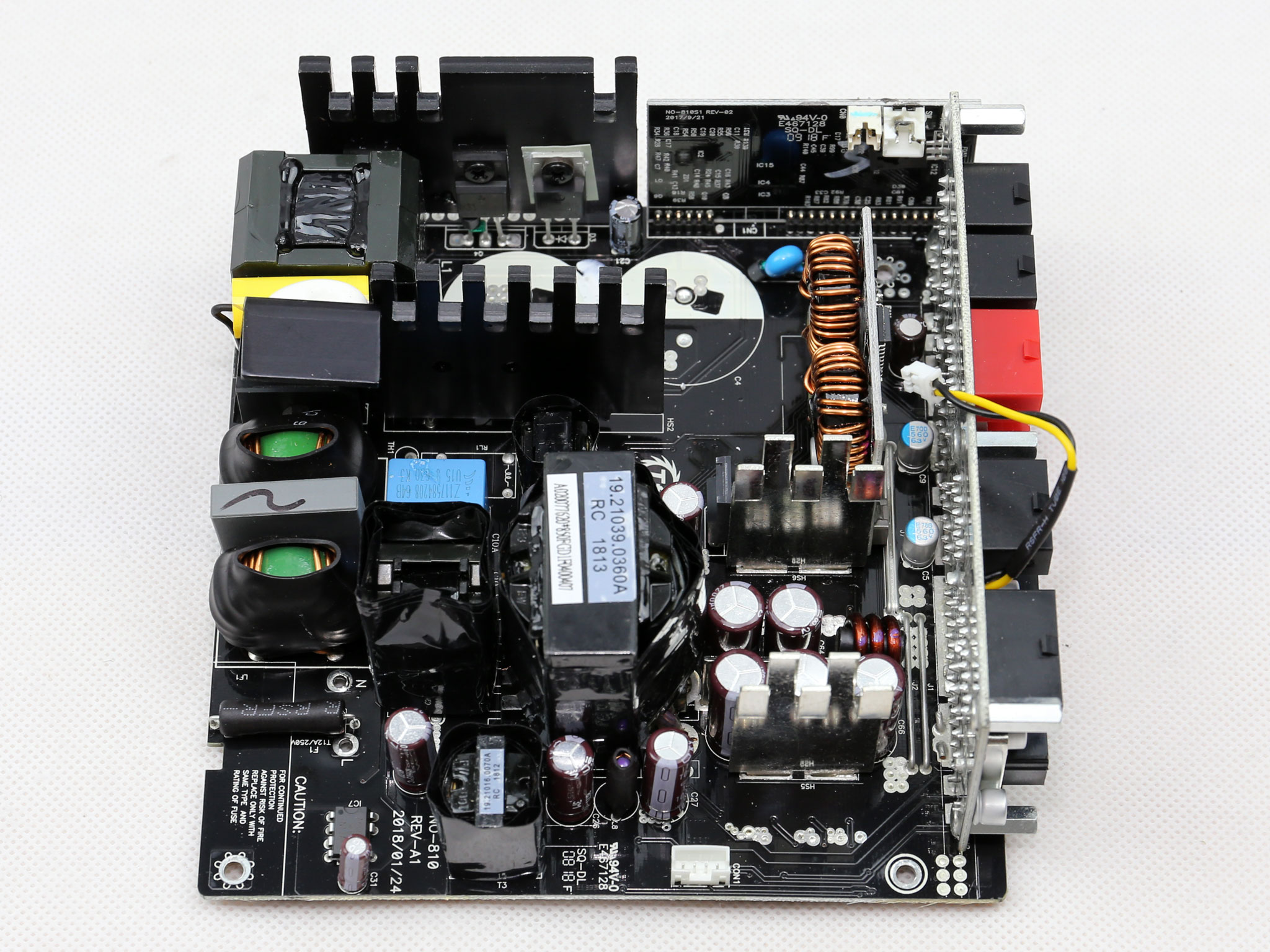

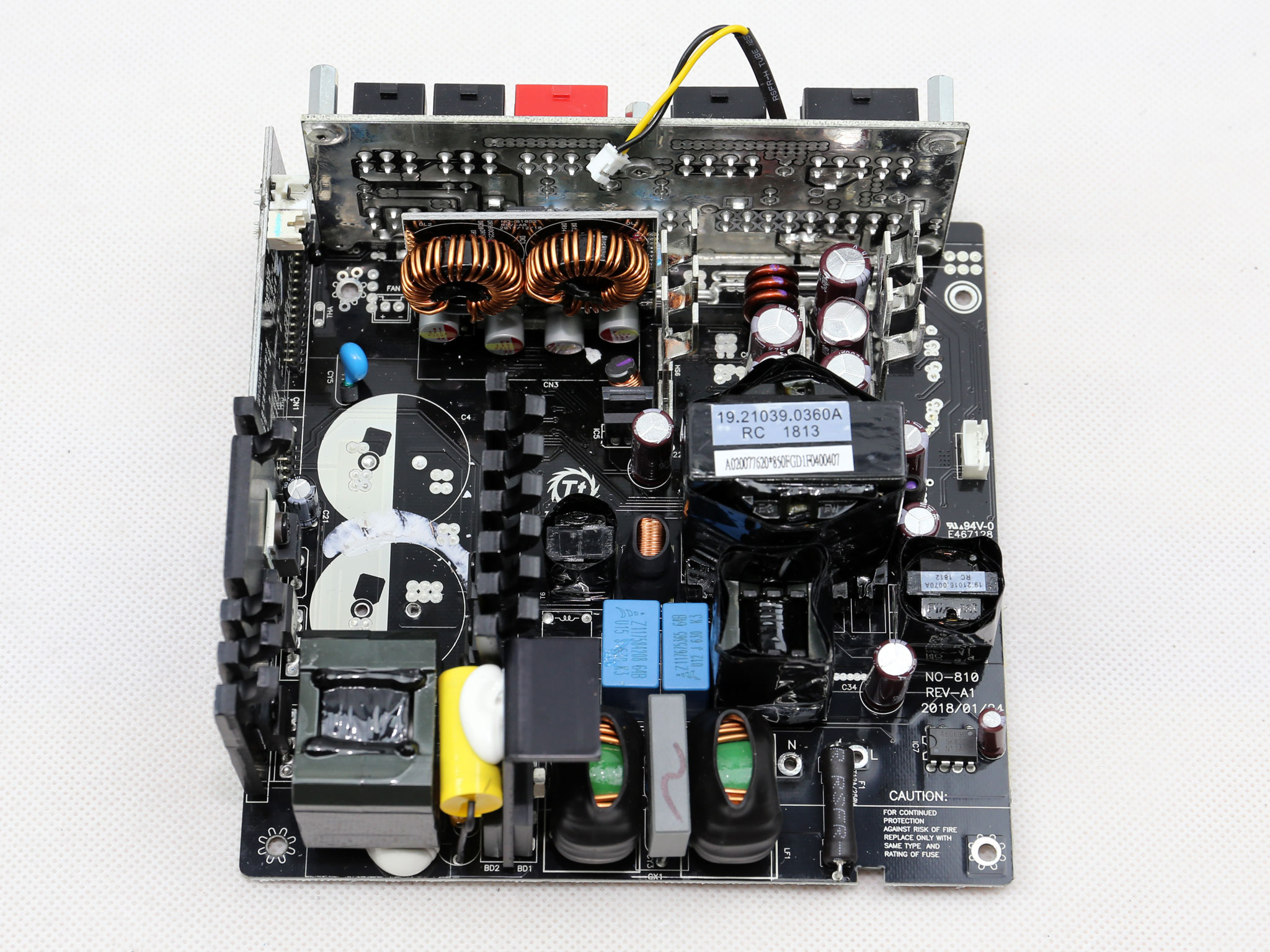

The platform uses quality Infineon FETs and Japanese electrolytic/polymer caps, so we can confidently claim that build quality is one of its strengths. Aside from one wire transferring power from the modular board, this design doesn't have cables cluttering up its internals. That one wire transferring the +12V rail from the modular board to the RGB control board only carries low power, and it doesn't interfere with airflow internally.
A half-bridge topology is used on the primary side, along with an LLC resonant converter. Several FETs regulate the secondary side's +12V rail, which then feeds a pair of DC-DC converters responsible for generating the minor (5V and 3.3V) rails. We appreciate the use of a proper rectifier for the -12V rail; it provides protection against overloads.
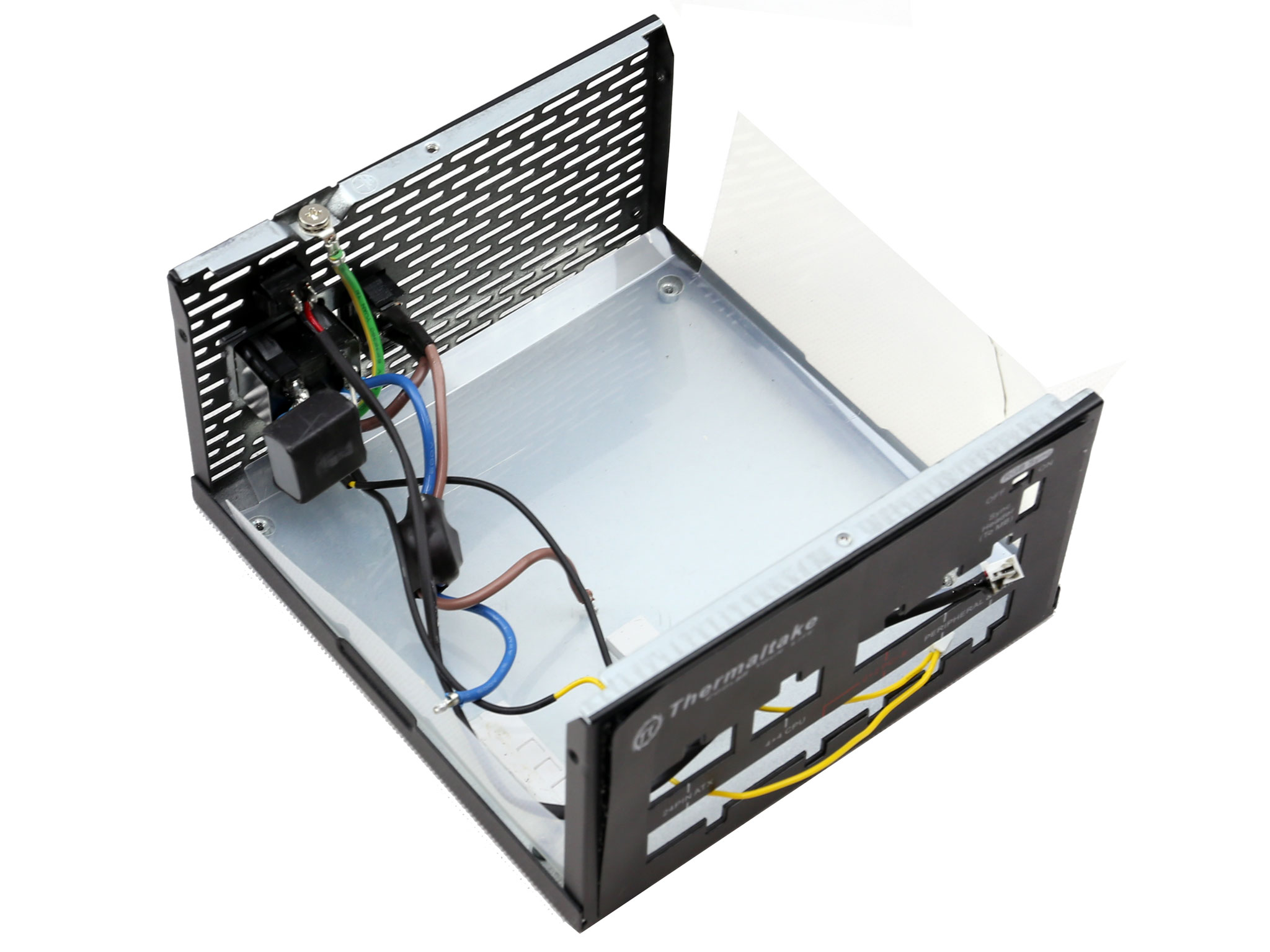
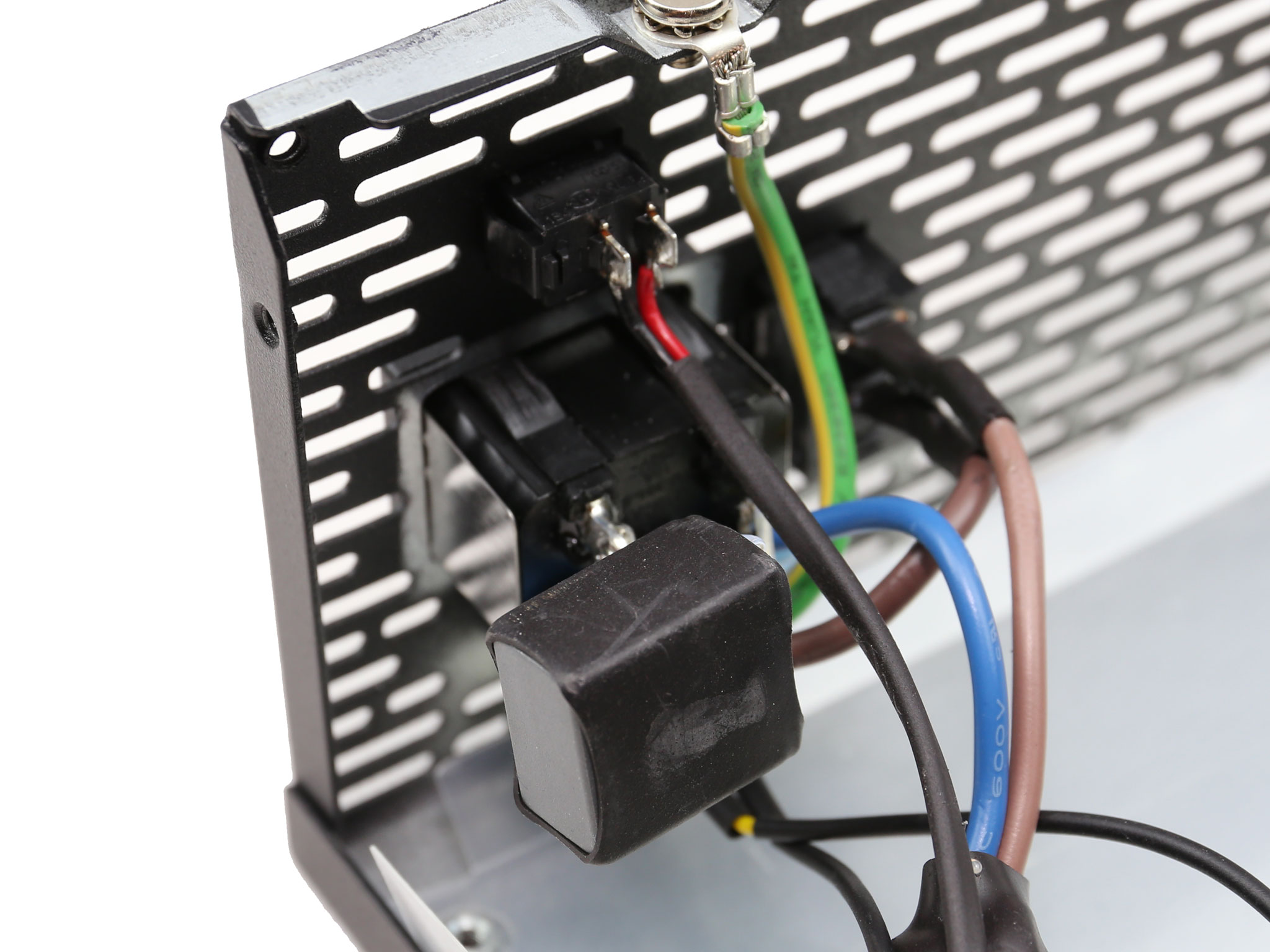
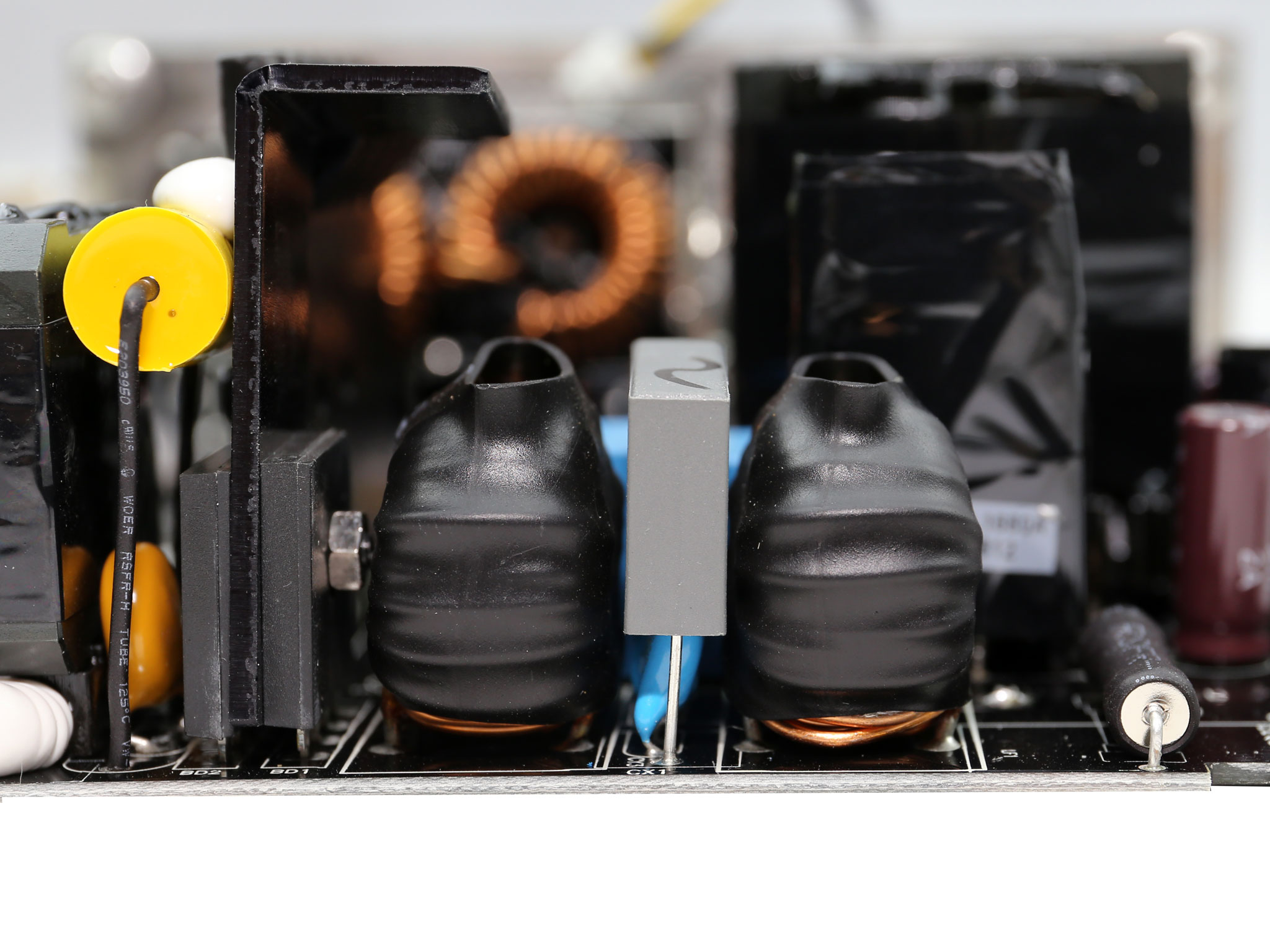
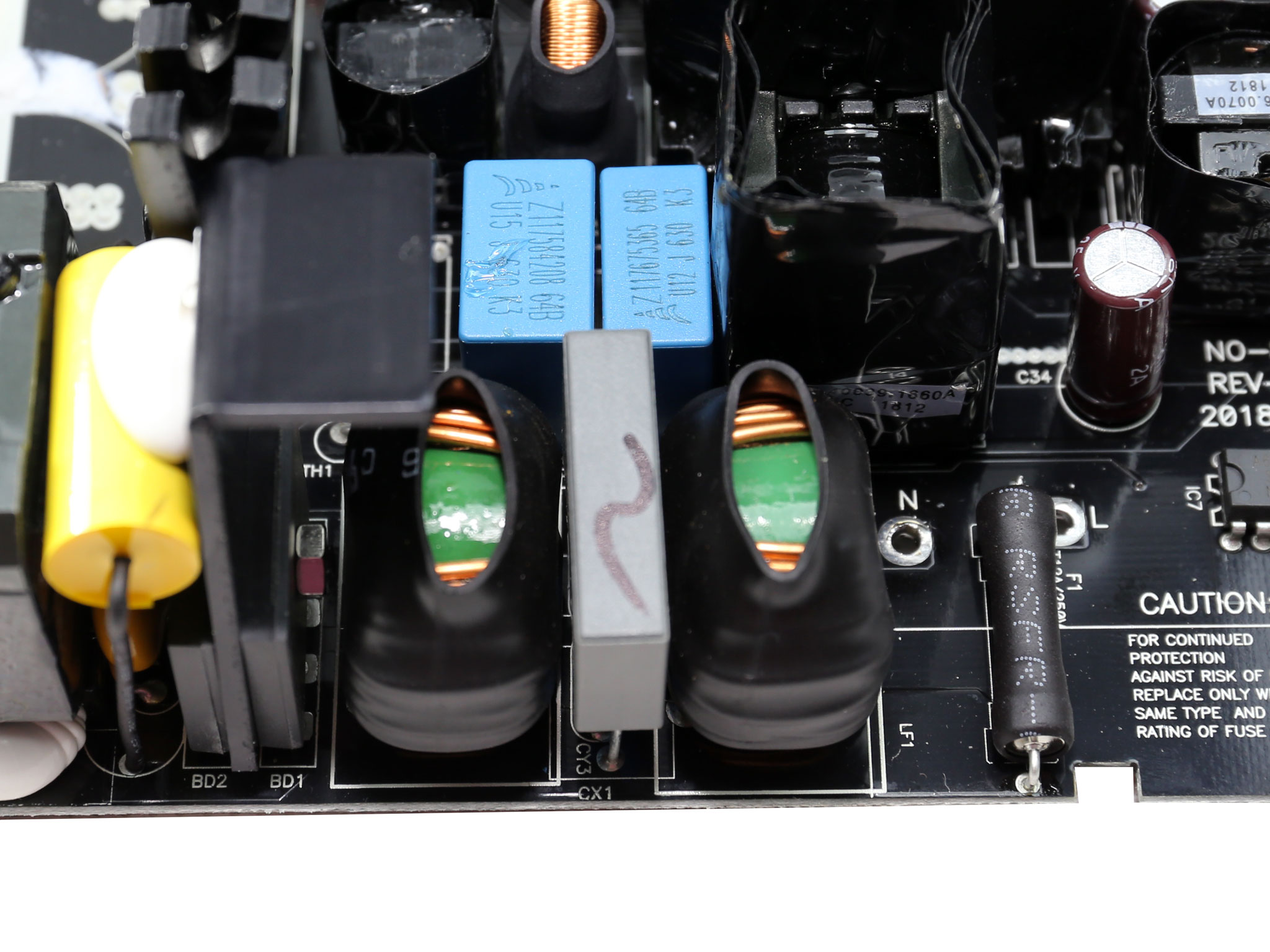
The first part of the EMI filter resides on the AC receptacle, including two Y caps and one X cap. As usual, it continues on the main PCB with the same amount of Y and X caps, along with two CM chokes, an MOV, and a Champion CMD02X discharge IC.

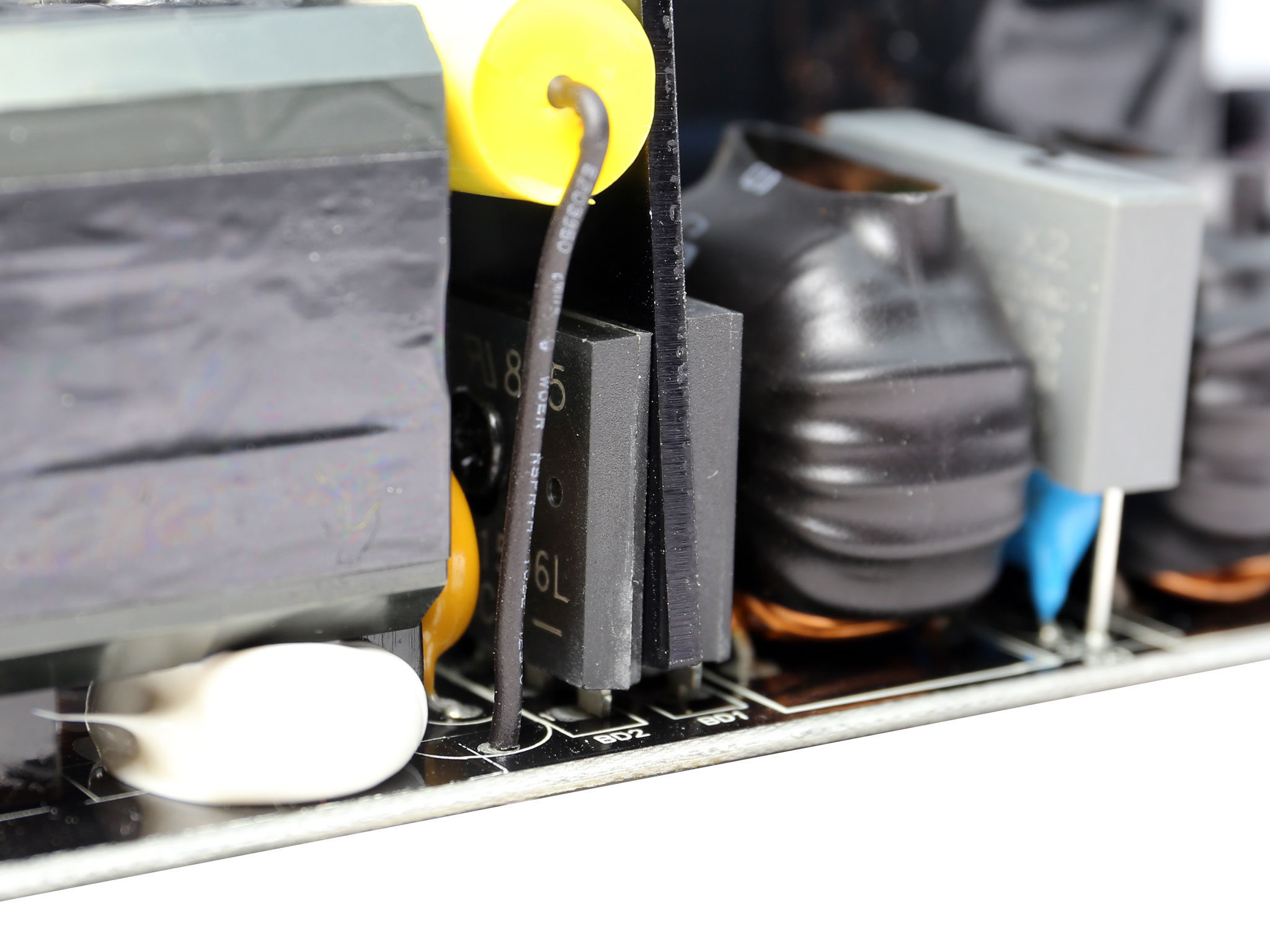
There are two bridge rectifiers (2x GBU1506L) that can handle a combined 30A of current.
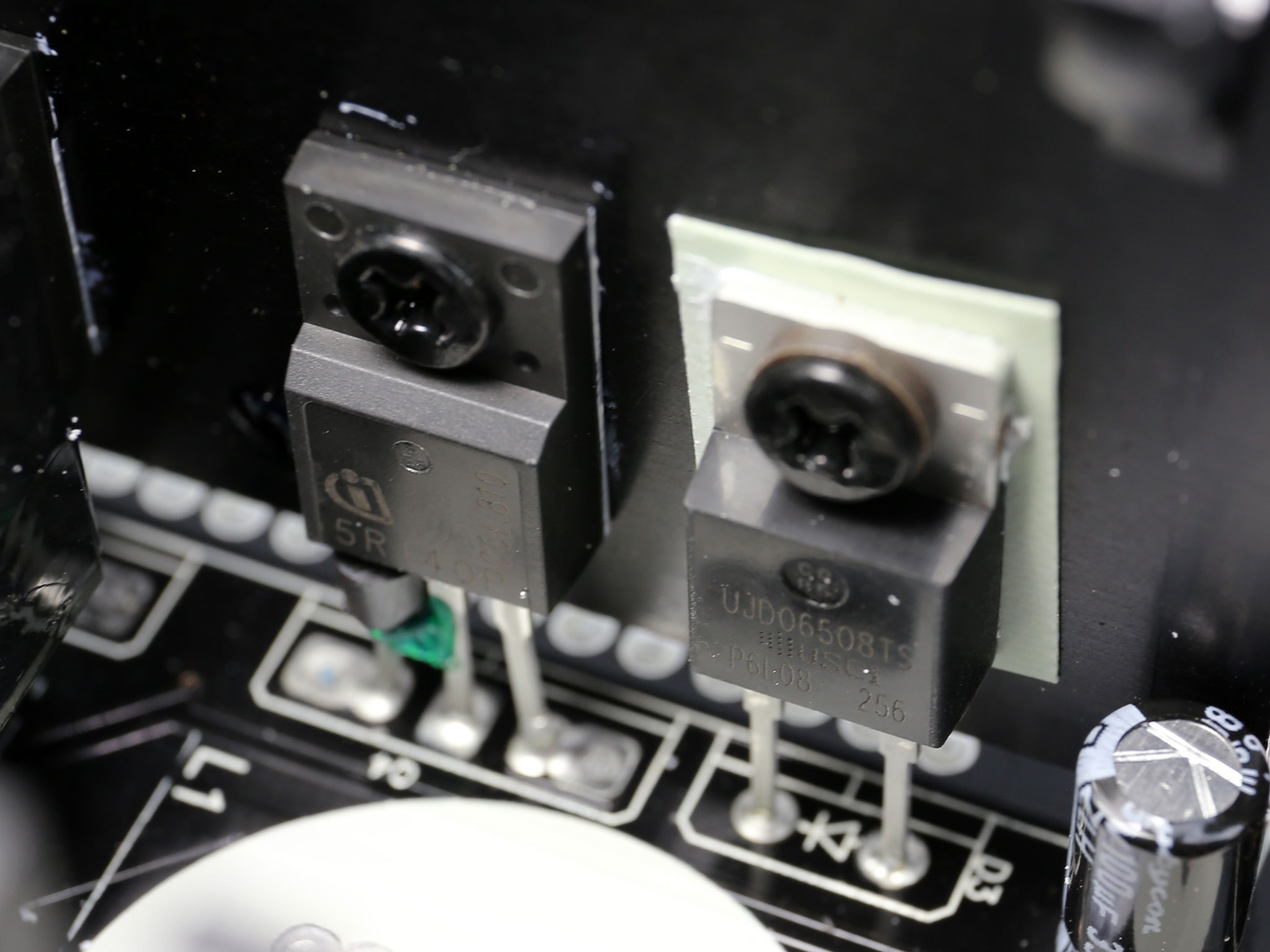
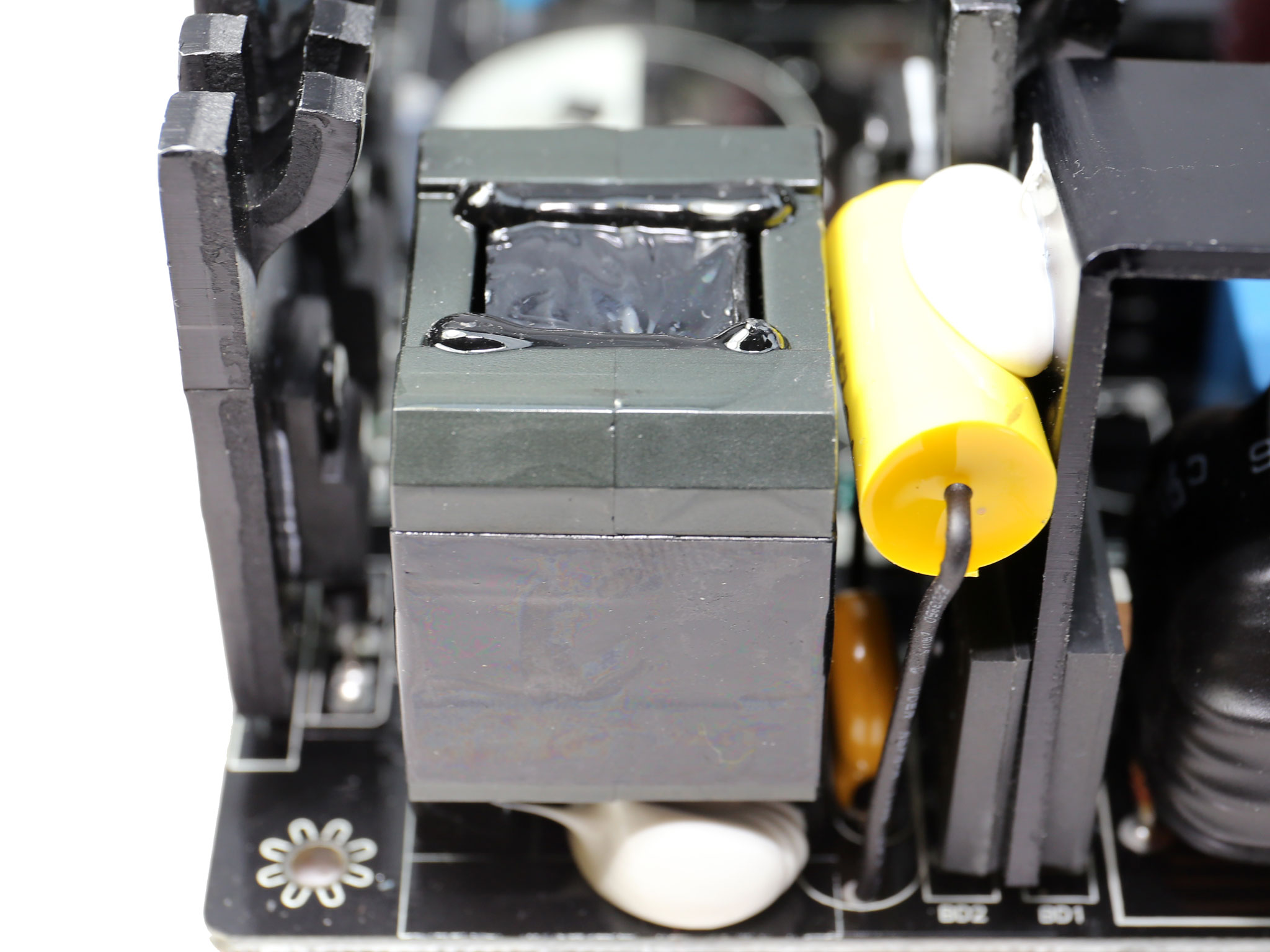

In the APFC converter, we find two Infineon IPA50R140CP FETs and a single UnitedSiC UJD06508TS boost diode. The bulk cap is provided by Rubycon (MXH series); it has 680uF of capacity. The APFC controller is an Infineon ICE3PCS01G IC. It's soldered on the board that also hosts the supervisor IC and MCU.
Get Tom's Hardware's best news and in-depth reviews, straight to your inbox.
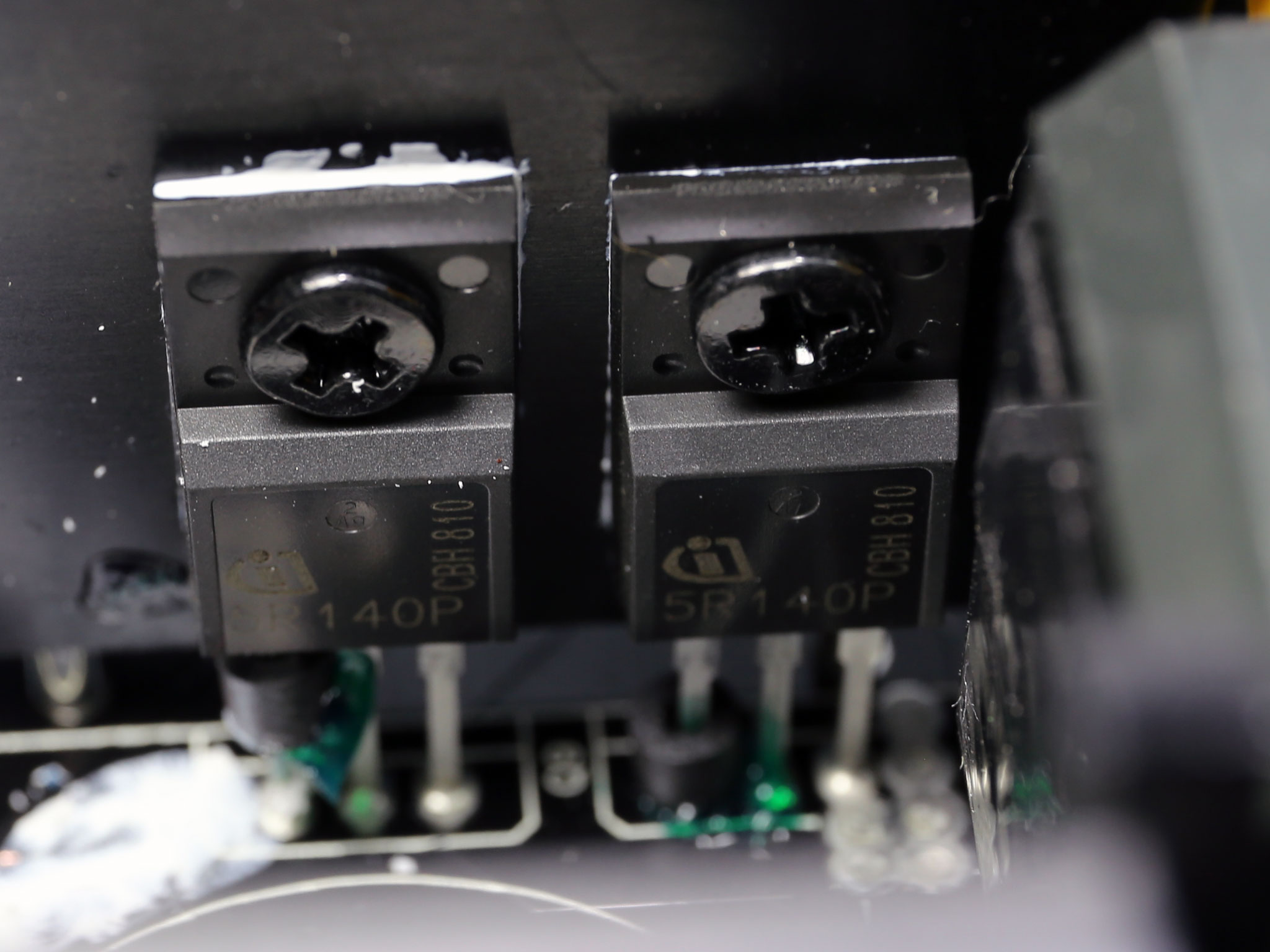
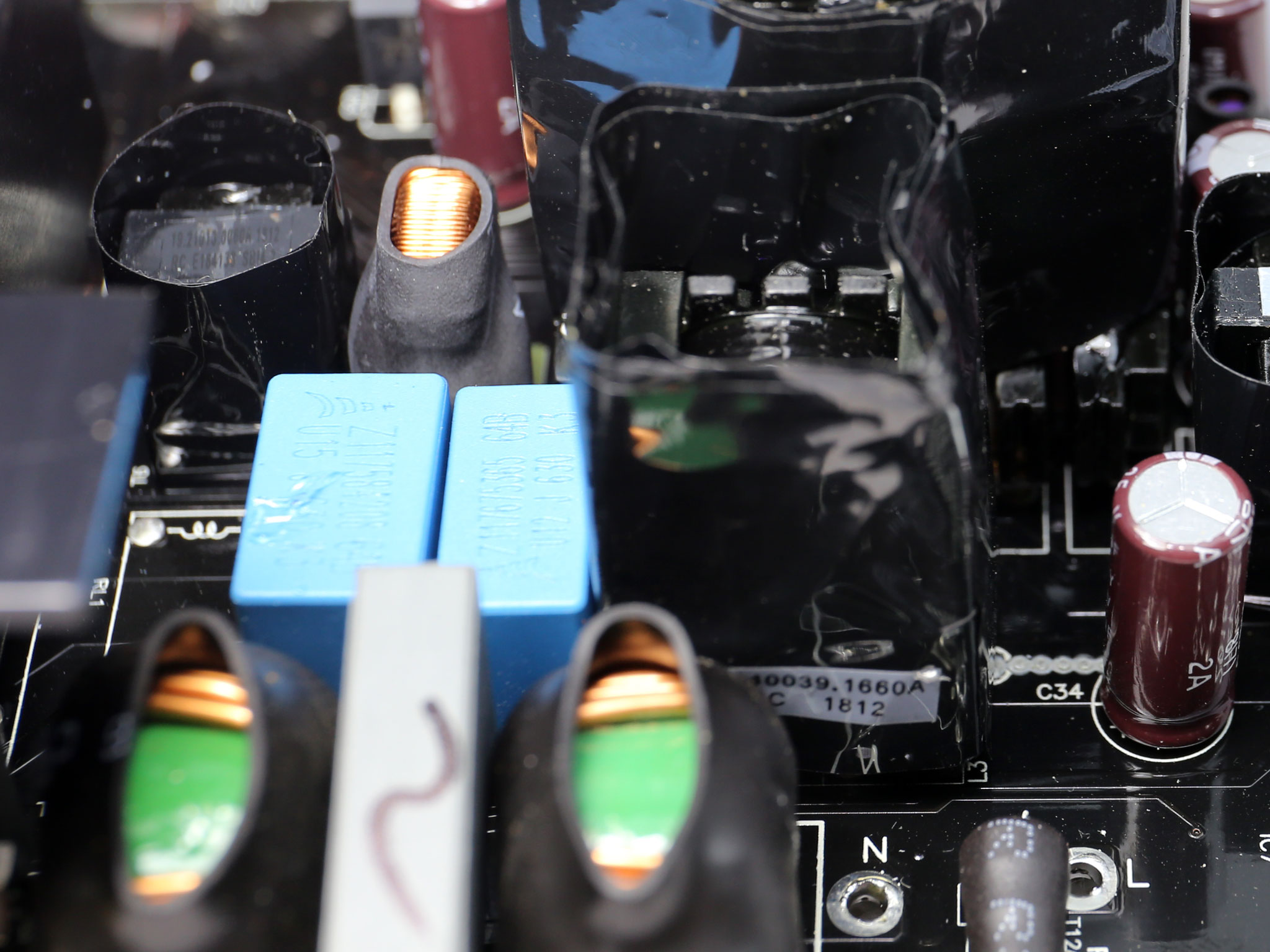
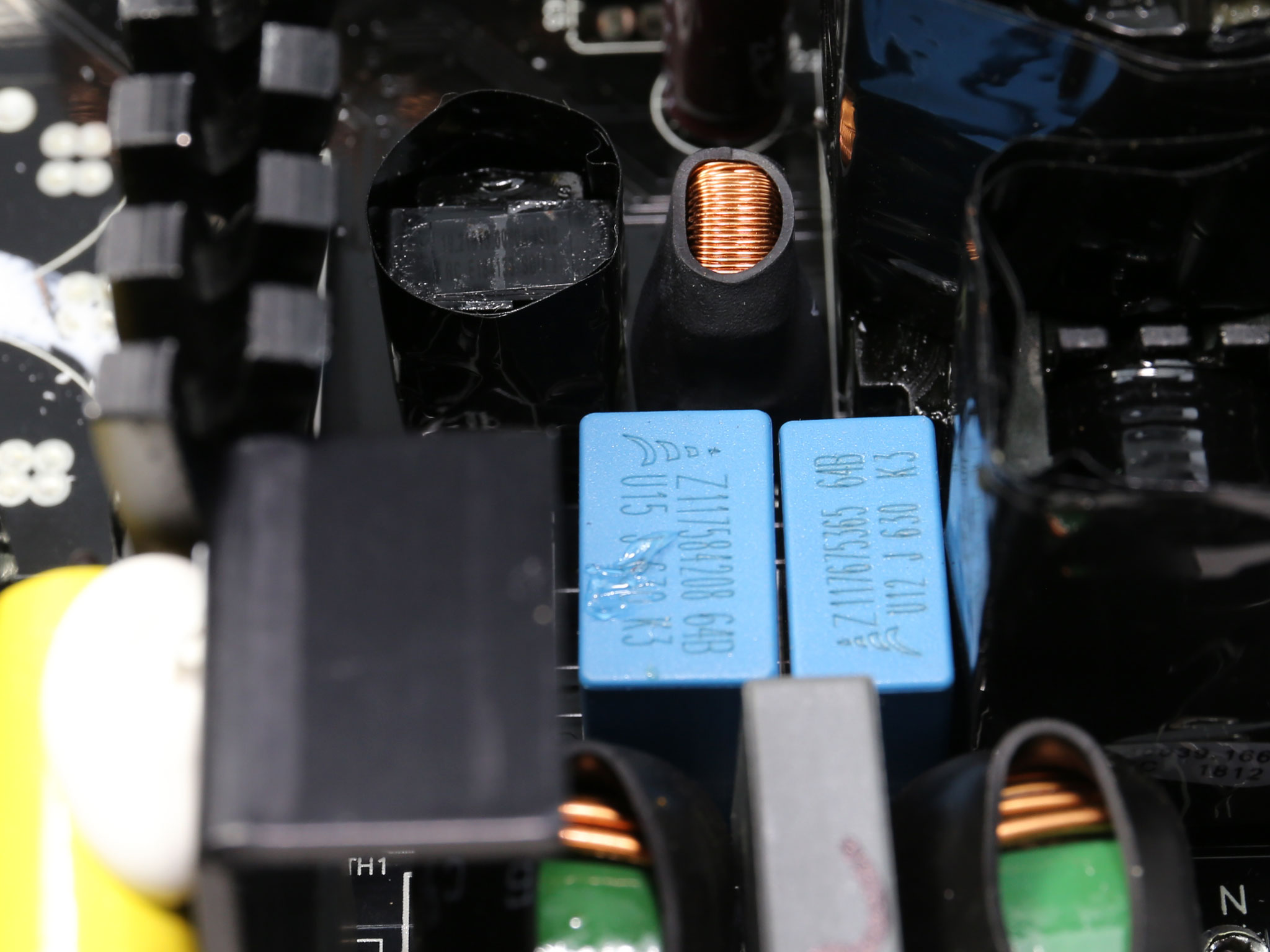
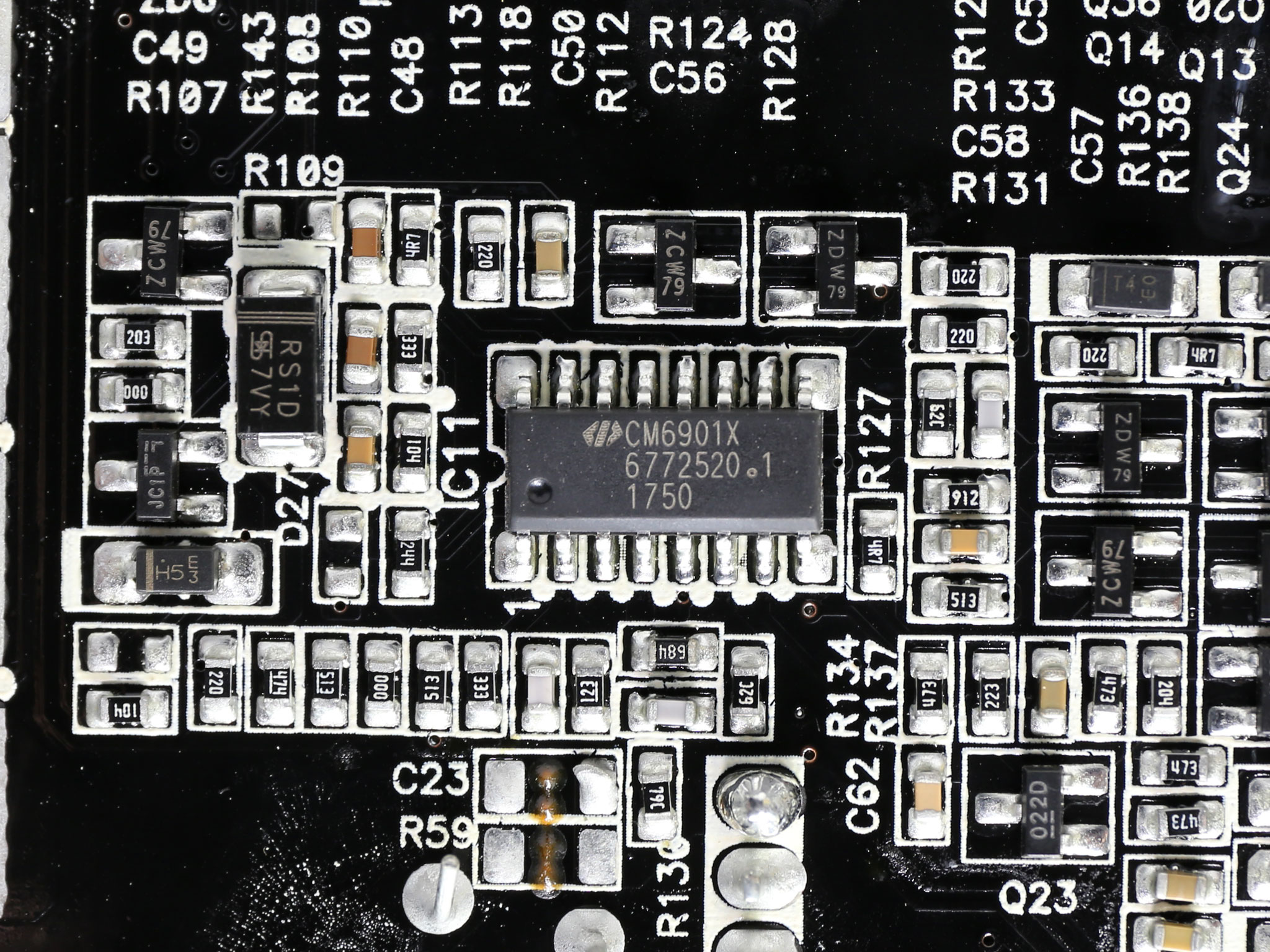


The main switchers are two Infineon IPA50R140CP FETs, arranged into a half-bridge topology. An LLC resonant converter is also used for increased efficiency. A Champion CM6901X controls those FETs and the +12V FETs. An STC 15W408AS micro-controller (MCU) appears to be responsible for the cooling fan's operation.
This PSU's main transformer is located close to the components that form the LLC resonant converter (a pair of X caps and a resonant tank).
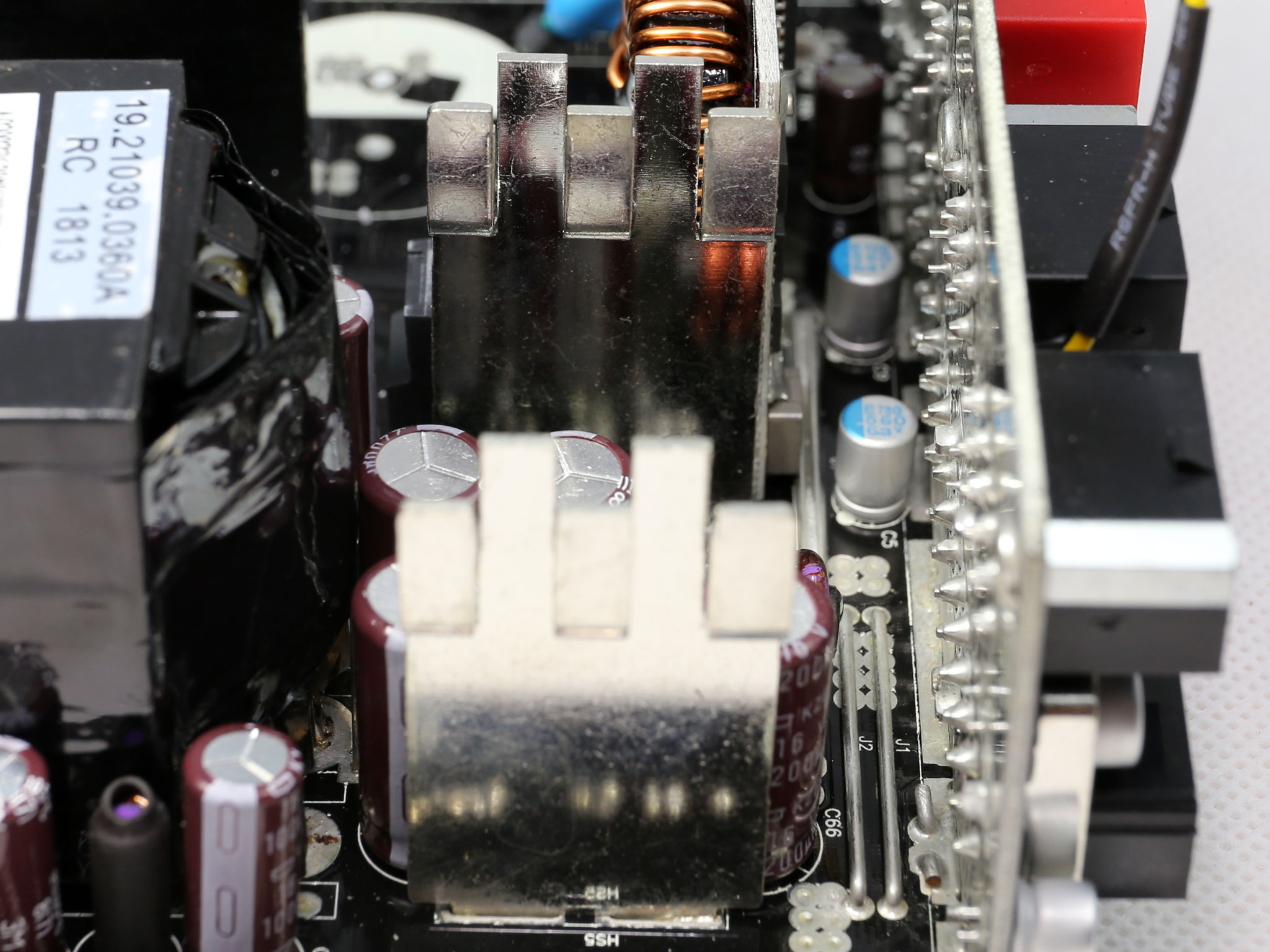
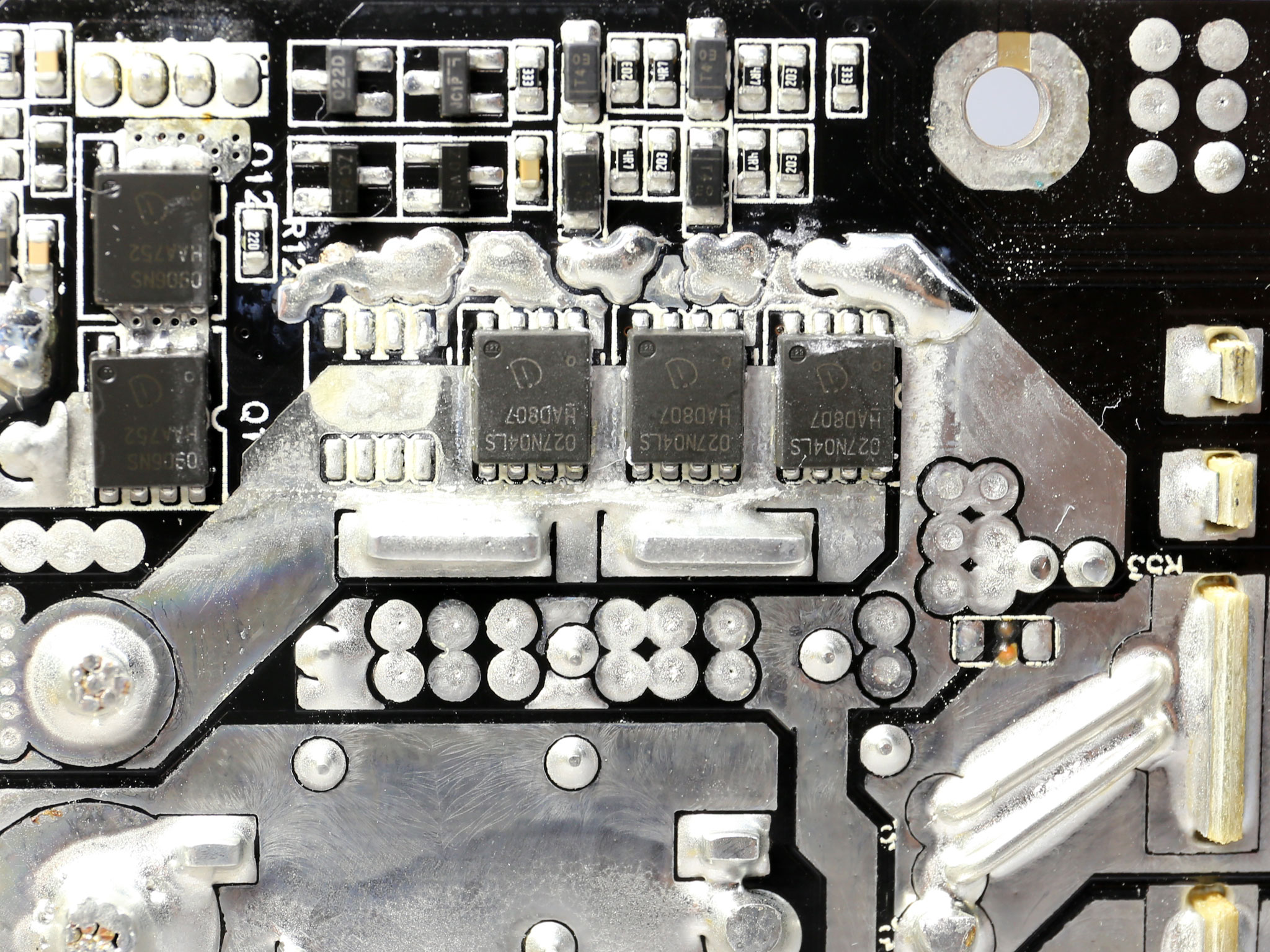
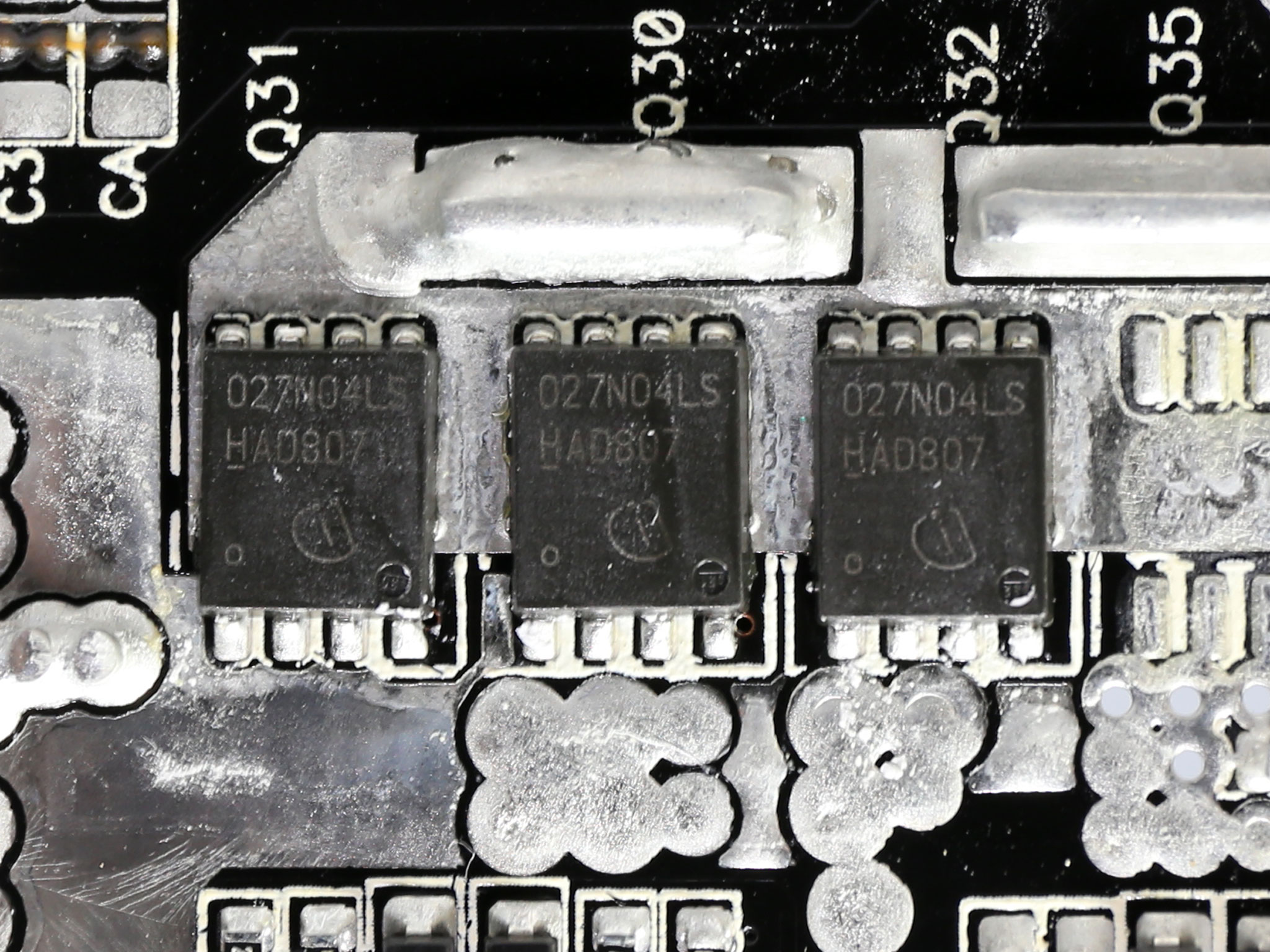
Two small heat sinks on the secondary side aren't bolted to any parts since the FETs handling the +12V rail are installed on the main PCB's solder side. In total six Infineon BSC027N04LS G are used.
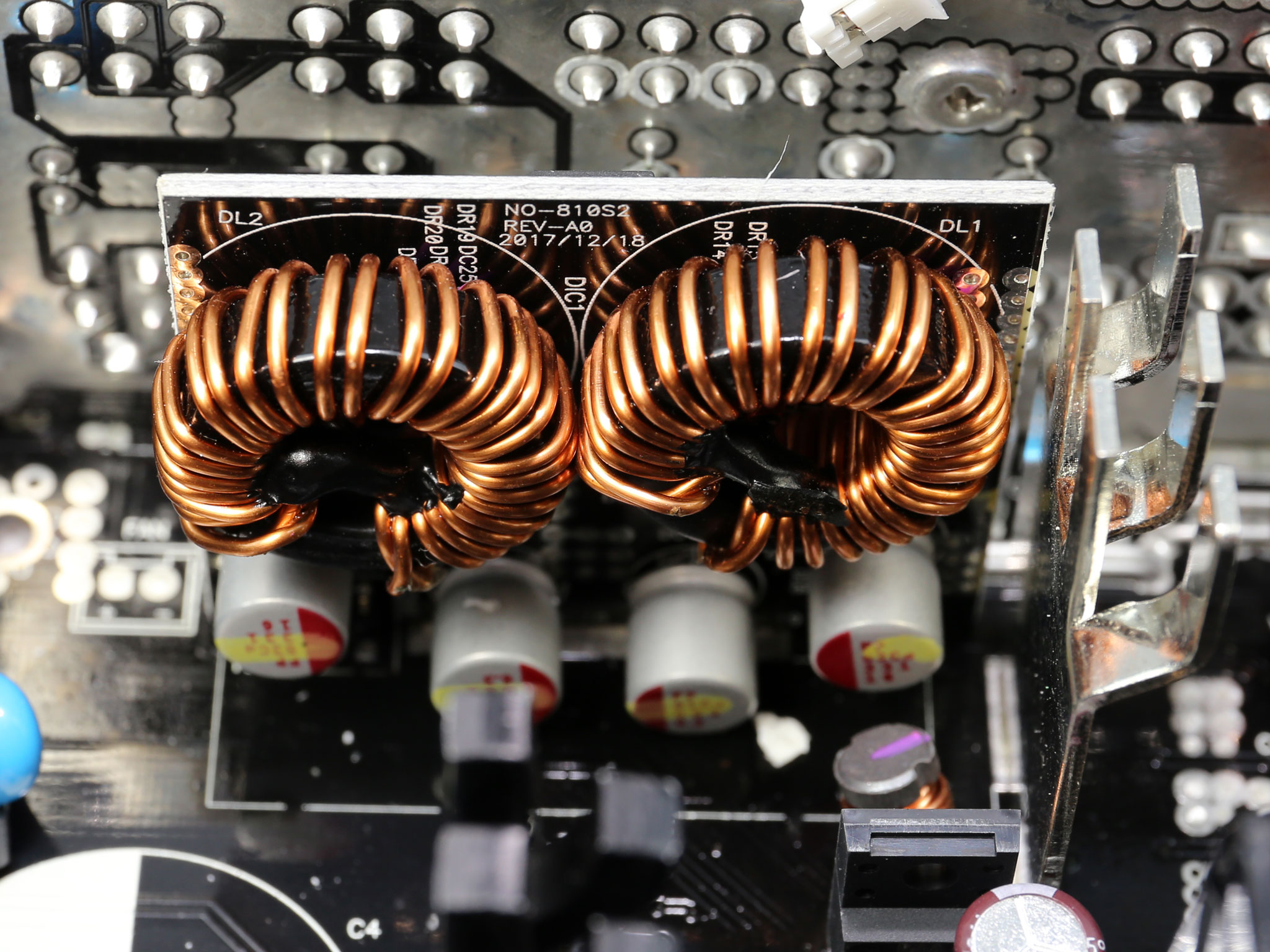
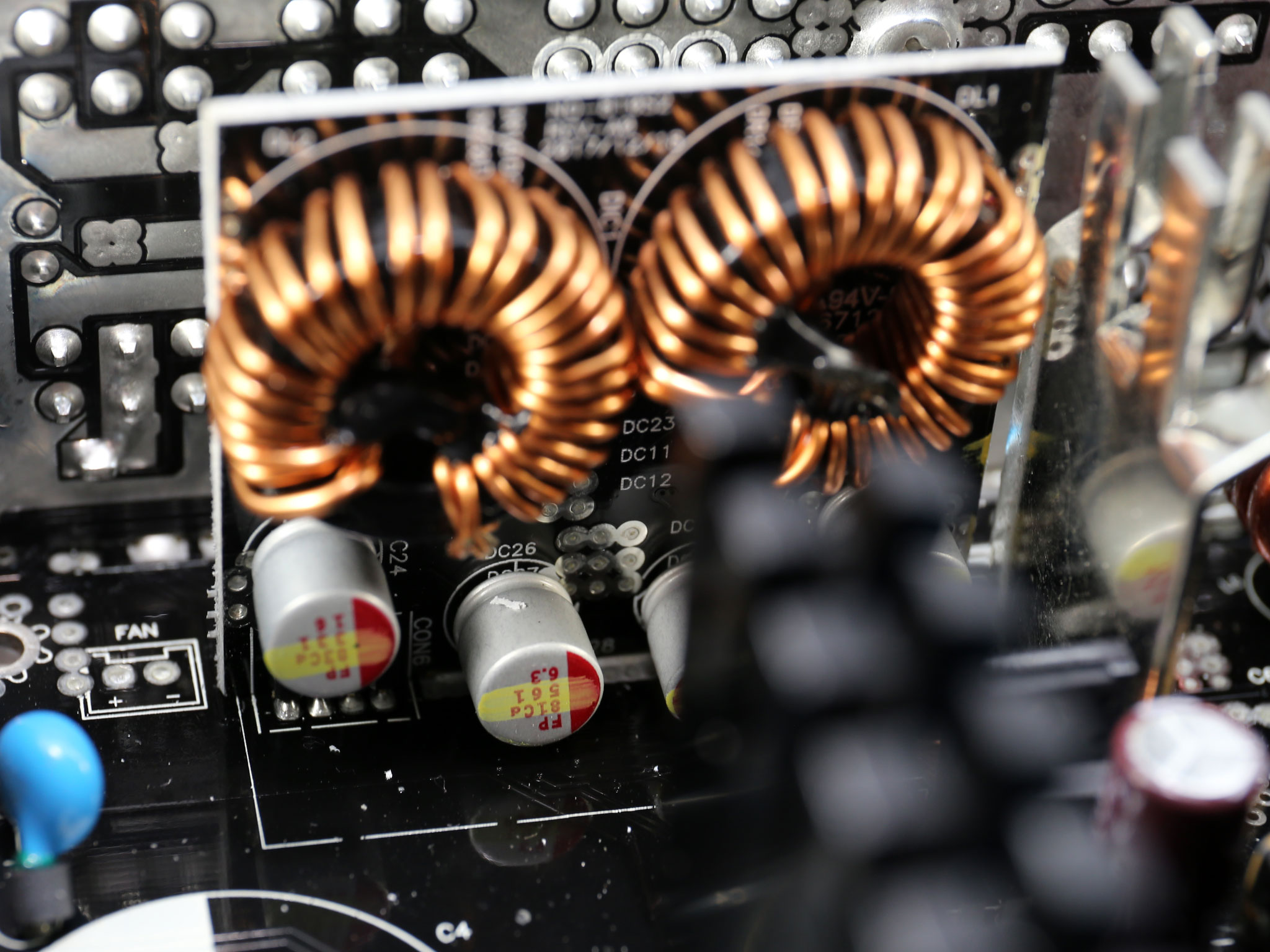
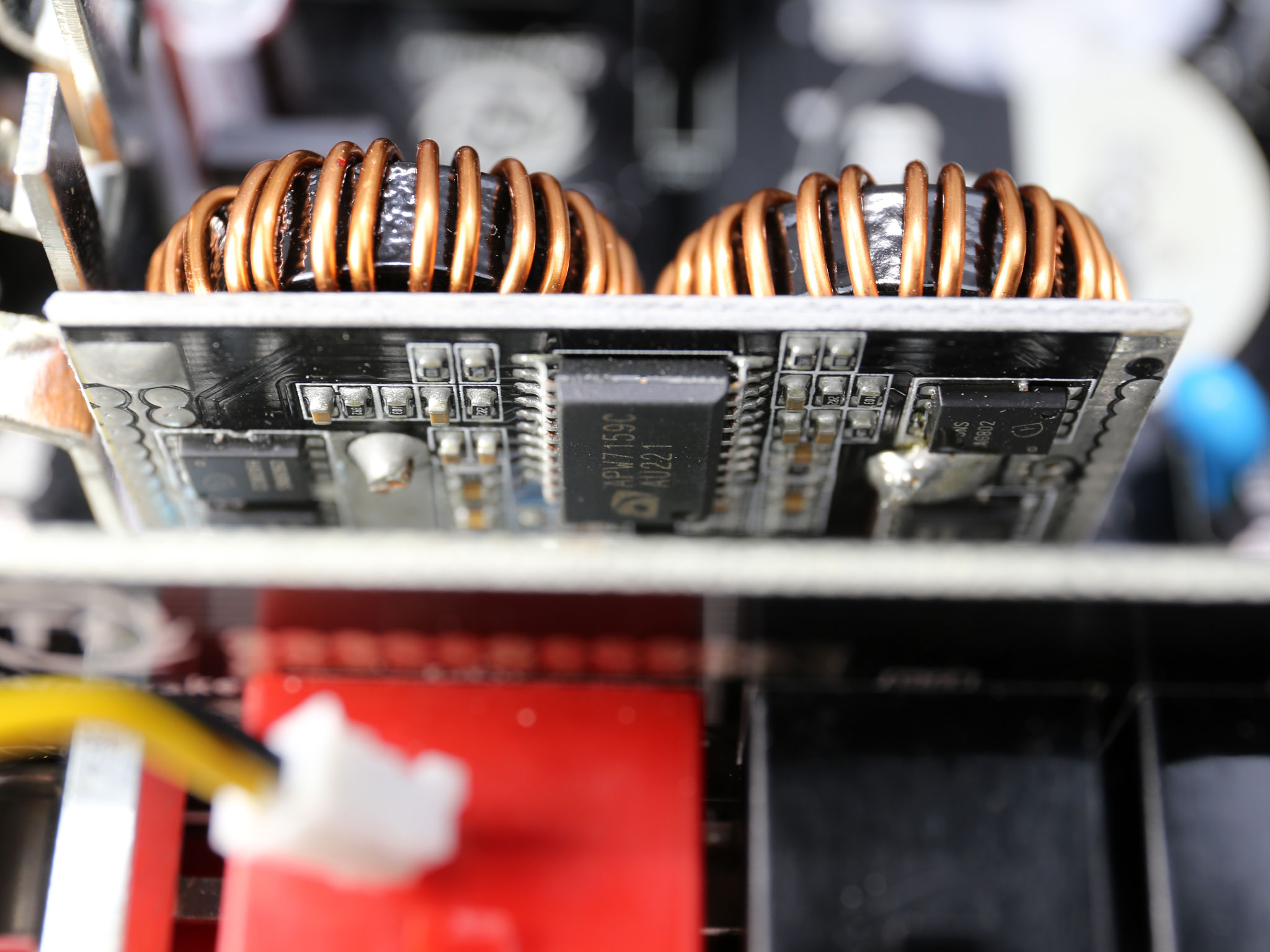
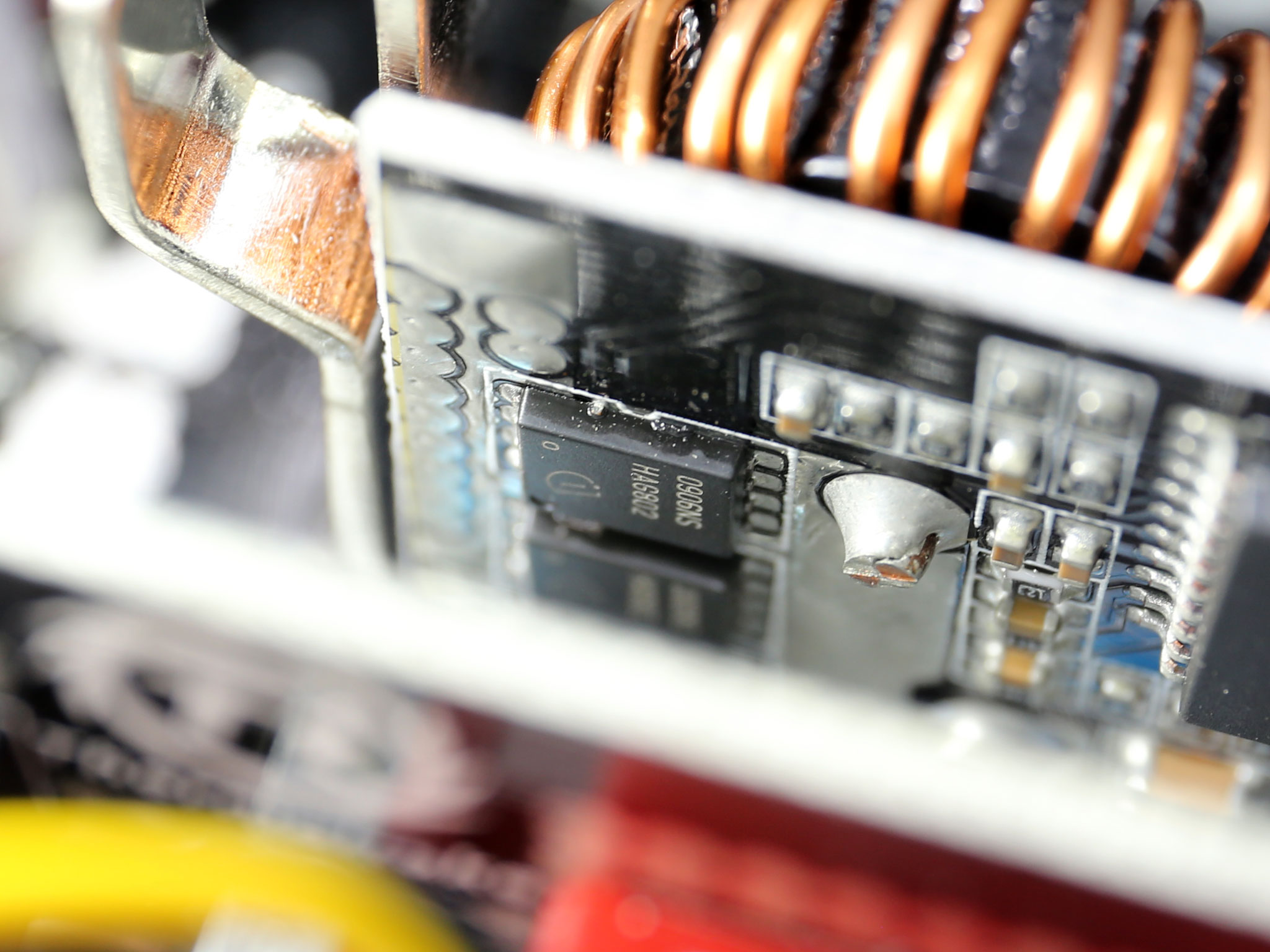
The DC-DC converters generating the minor rails utilize six Infineon BSC0906NS FETs. Meanwhile, the PWM controller is provided by Anpec (APW7159C).
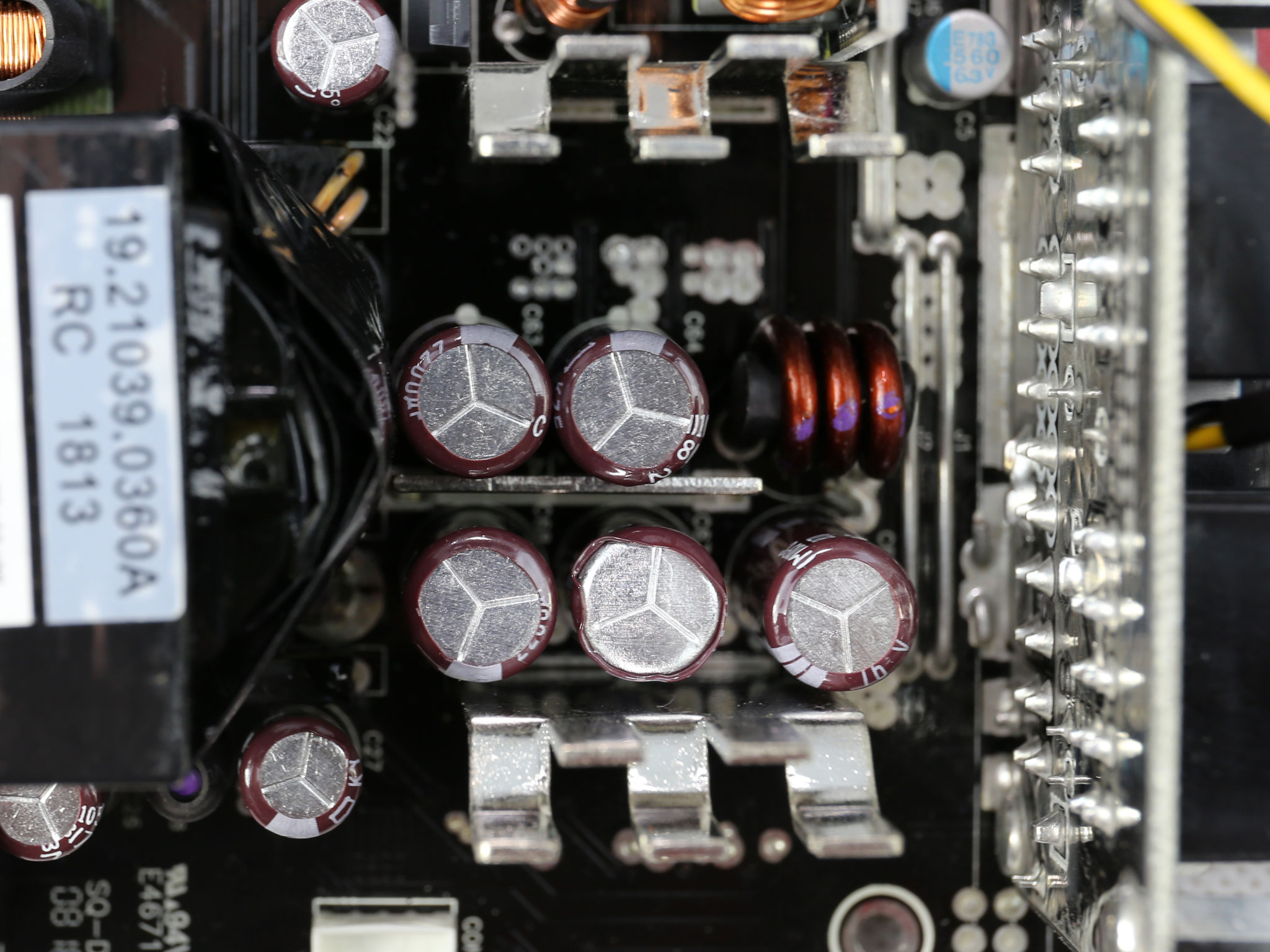
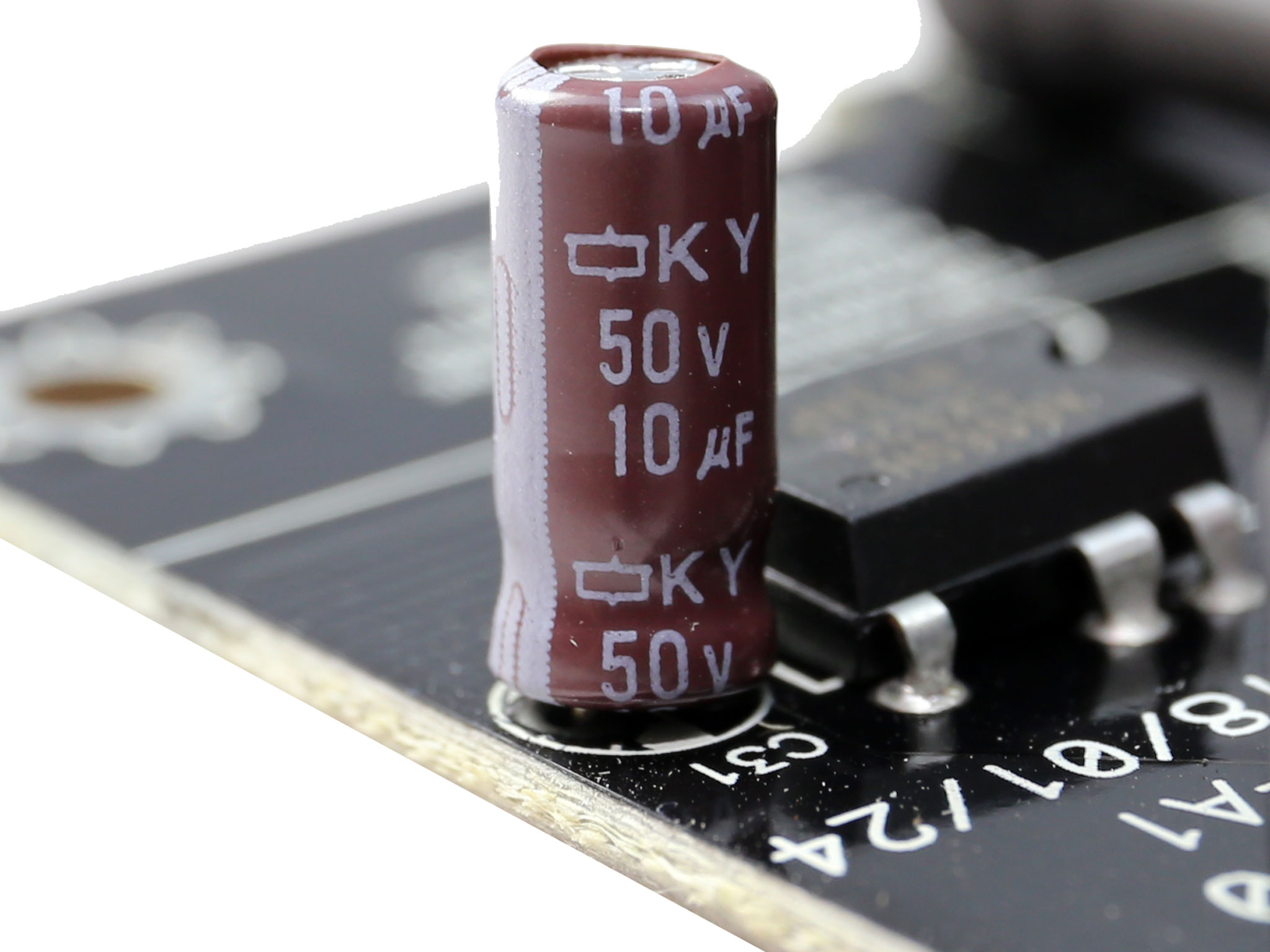

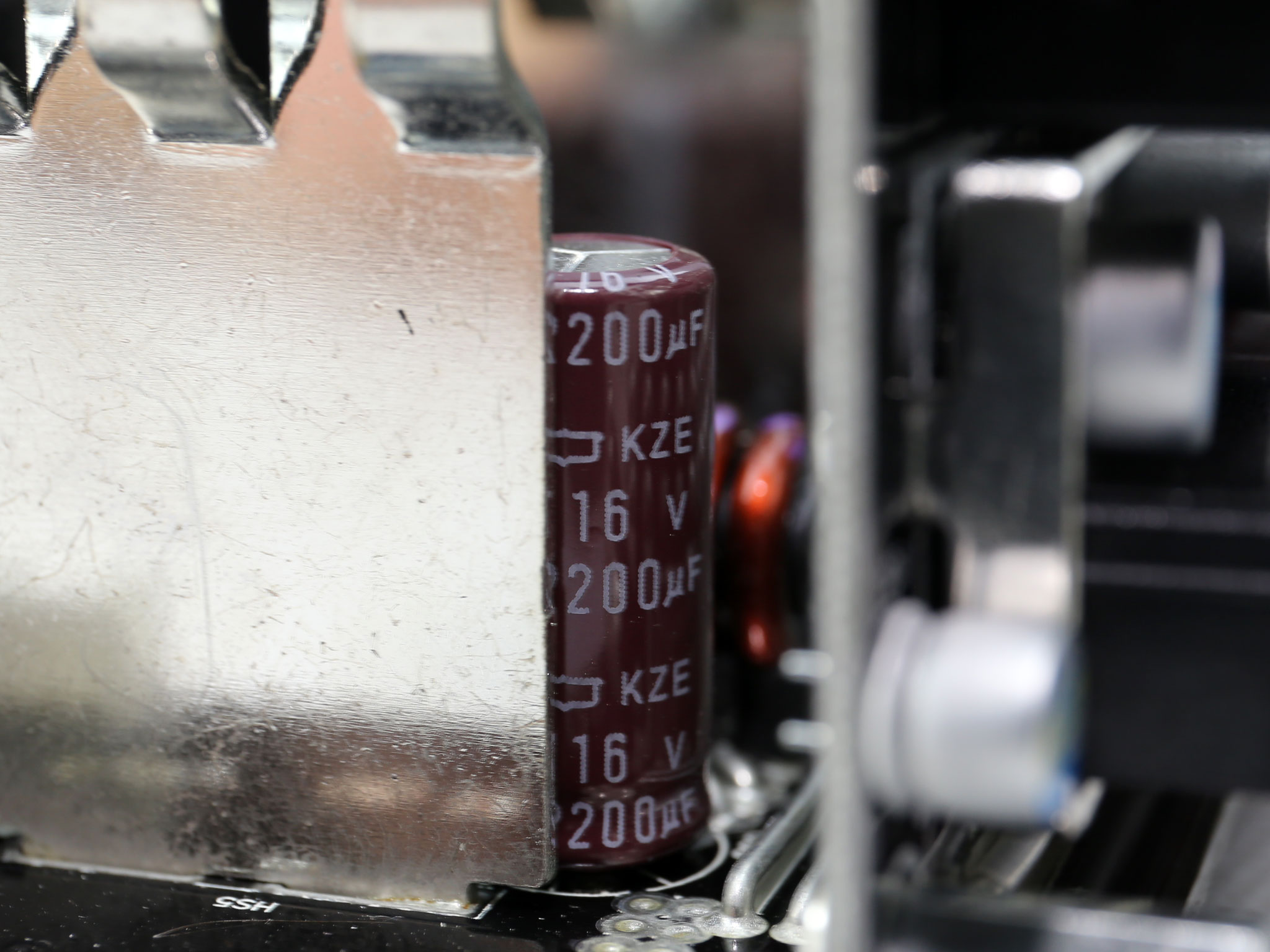
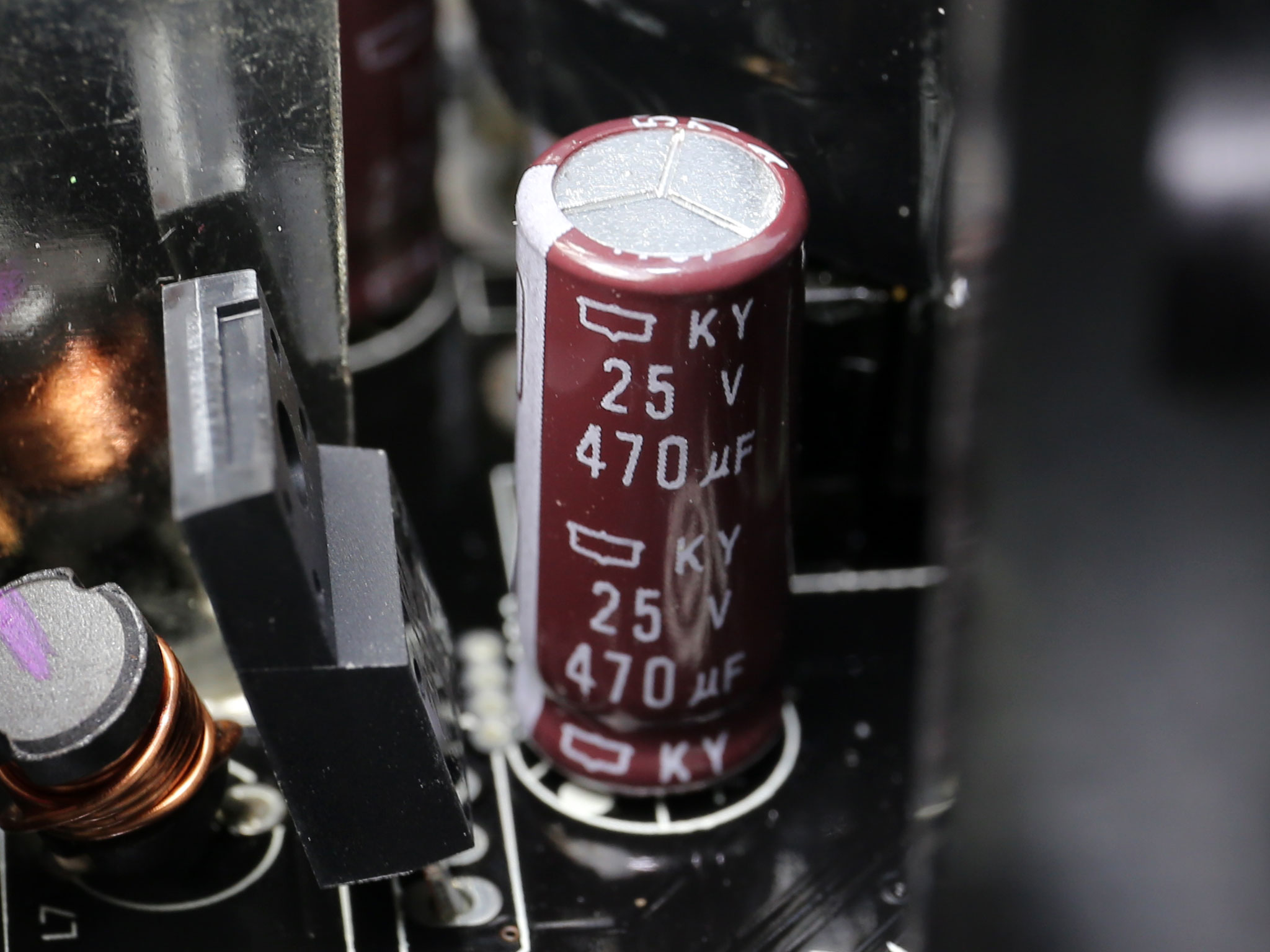
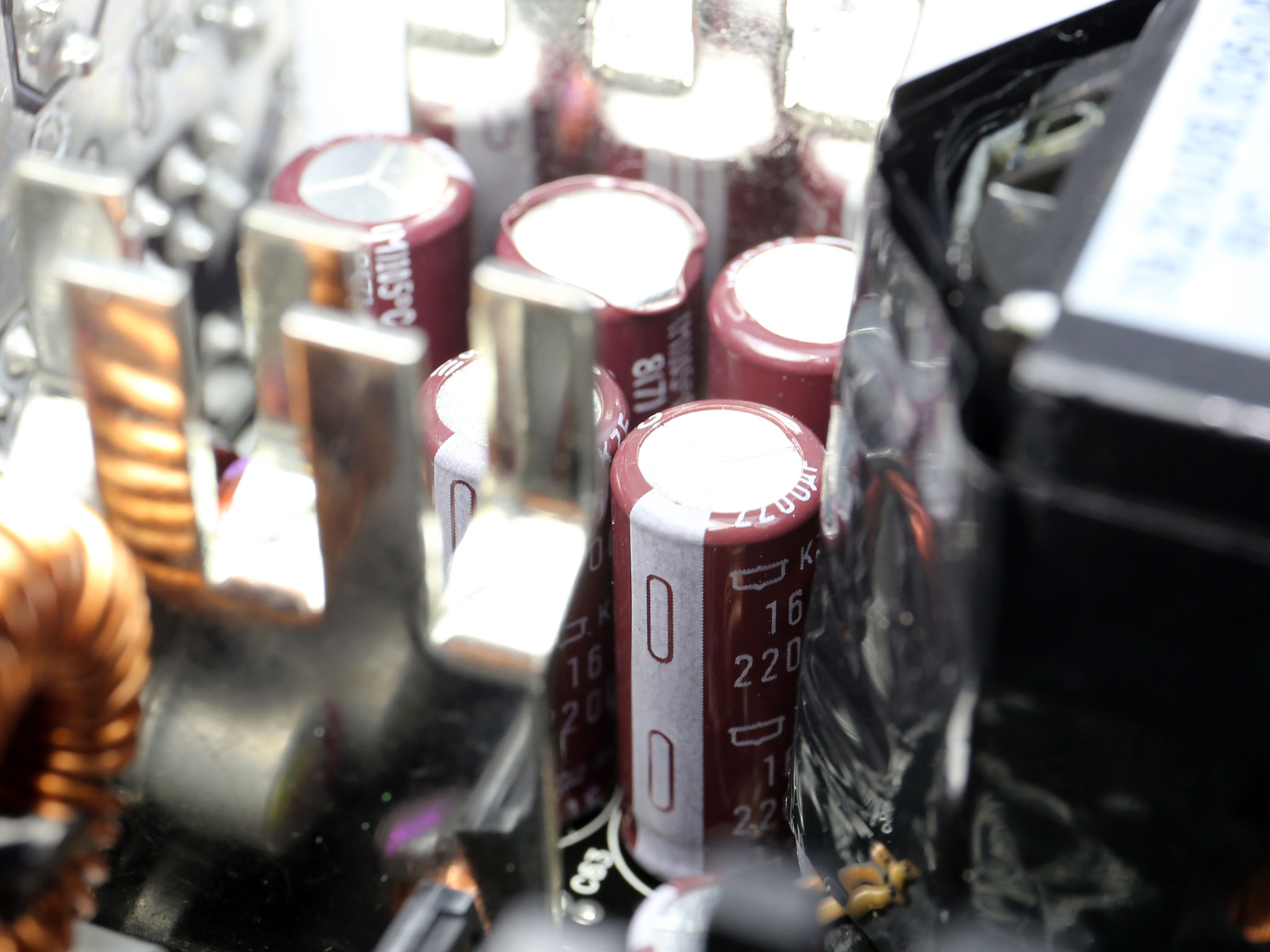
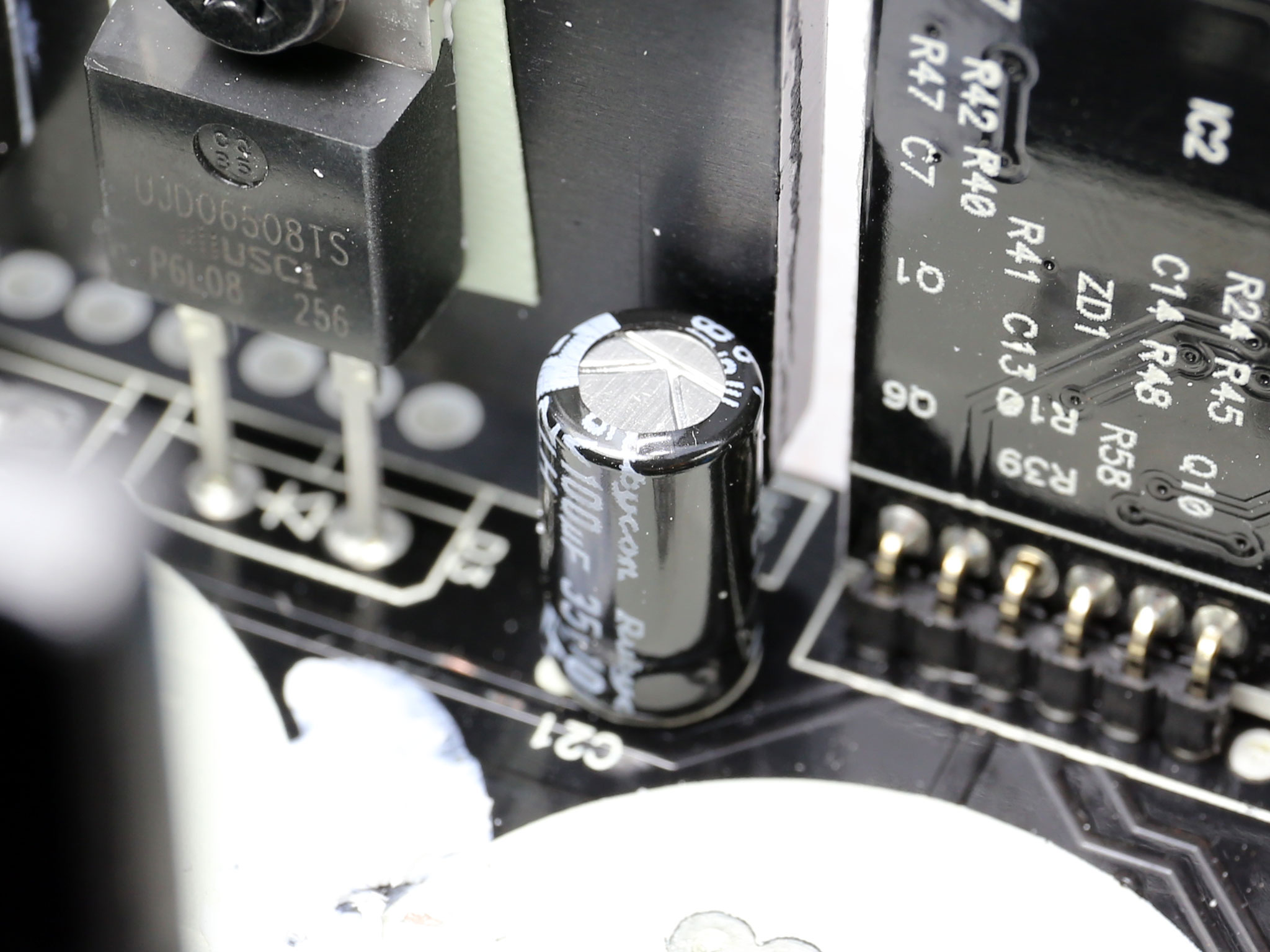
As Thermaltake claims, only Japanese capacitors filter the secondary side's rails. Besides KZE and KY Chemi-Cons, we also find a lonely Rubycon ZLH cap. Several polymer caps from Chemi-Con and FPCAP are used as well.
The supervisor IC is a Siti PS224. It's installed on a board that also hosts the fan's MCU and the APFC's controller. A pair of optocouplers electrically isolate the primary and secondary sides on this board.
Thanks to an Atmel AT24C02N EEPROM, Thermaltake's TPG-850AH3FSGR "remembers" its most recent lighting mode. Unfortunately, there is no way to identify the RGB controller; all markings on it were carefully removed.


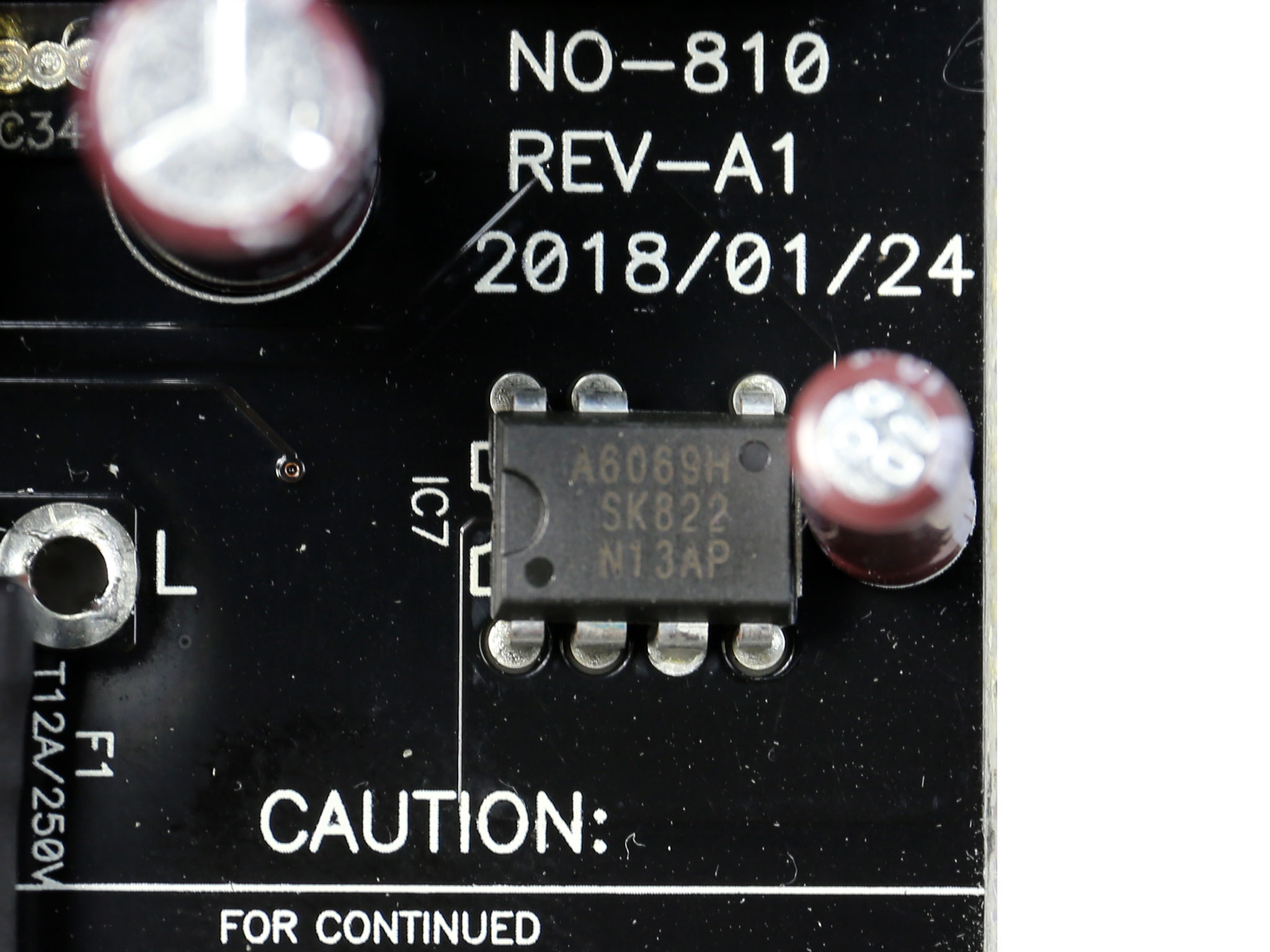
The 5VSB rail's primary rectifier appears to be an Infineon BSC0906NS FET. There is a similar-looking FET close by that's most likely used by the 5VSB circuit as well. The secondary rectifier is a PCF P10V45 SBR, and the standby PWM controller is a Sanken STR-A6069H.
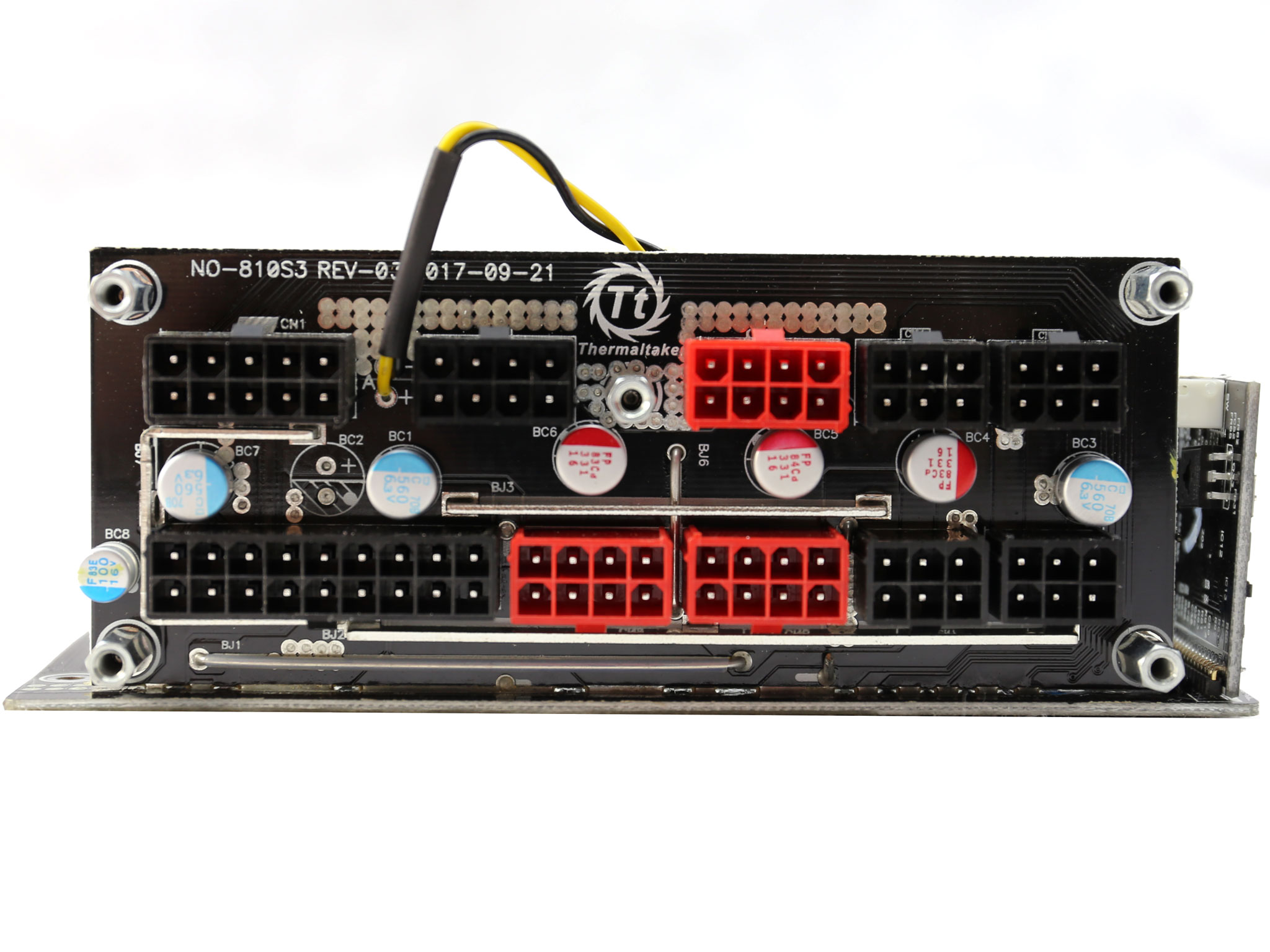

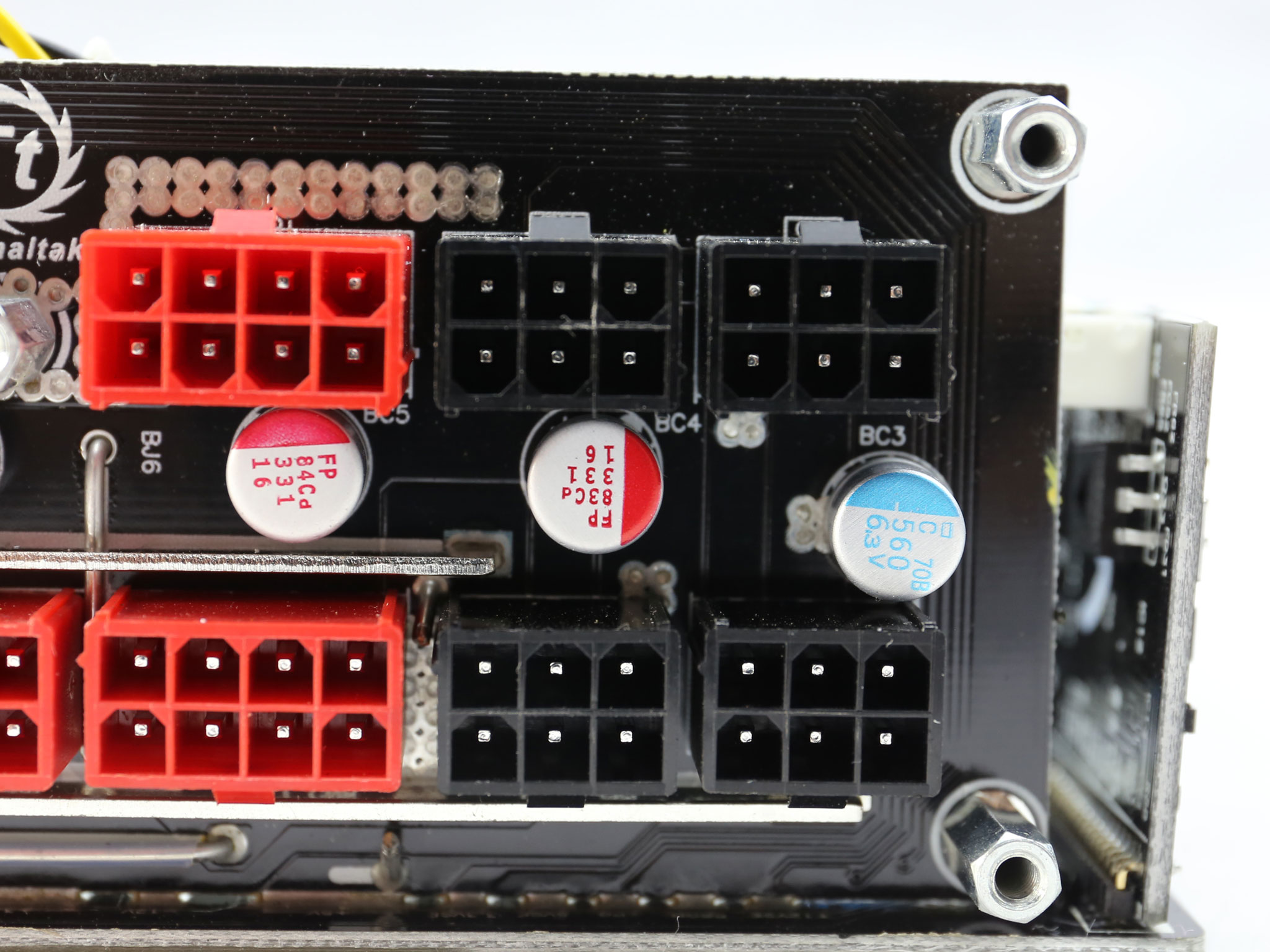
Seven polymer caps are used on the front of the modular PCB for ripple suppression.
It is nice to see a proper rectifier IC for the -12V rail. If the rail is overloaded, this means the PSU won't be damaged. Most components don't use -12V nowadays, but it can still prevent the PSU from switching on if something goes wrong, as the supervisor IC checks all rails for proper operation before providing the "go" signal.




The soldering quality is good overall. We don't spot any sloppy soldering joints, and the component leads are trimmed short.
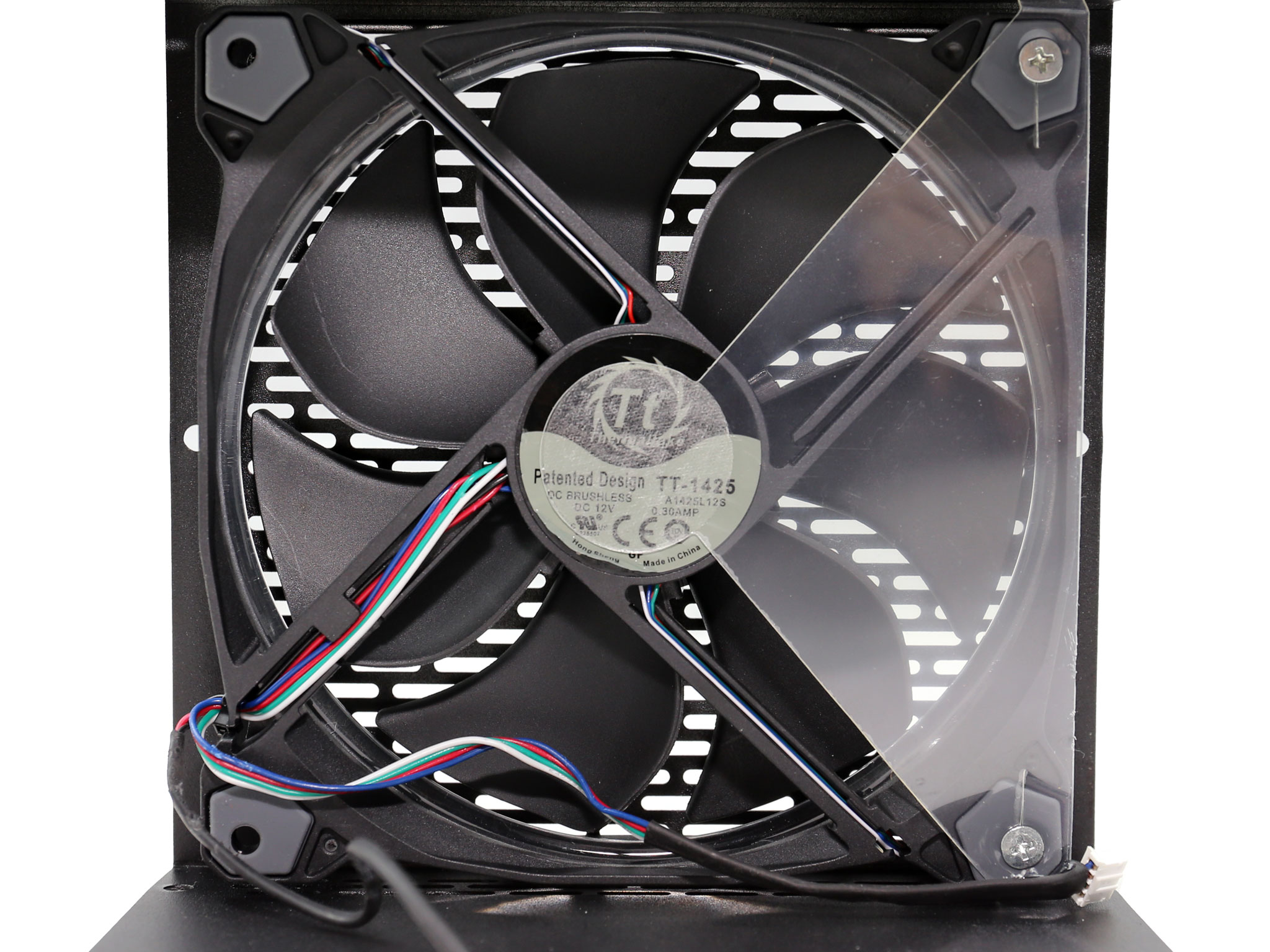
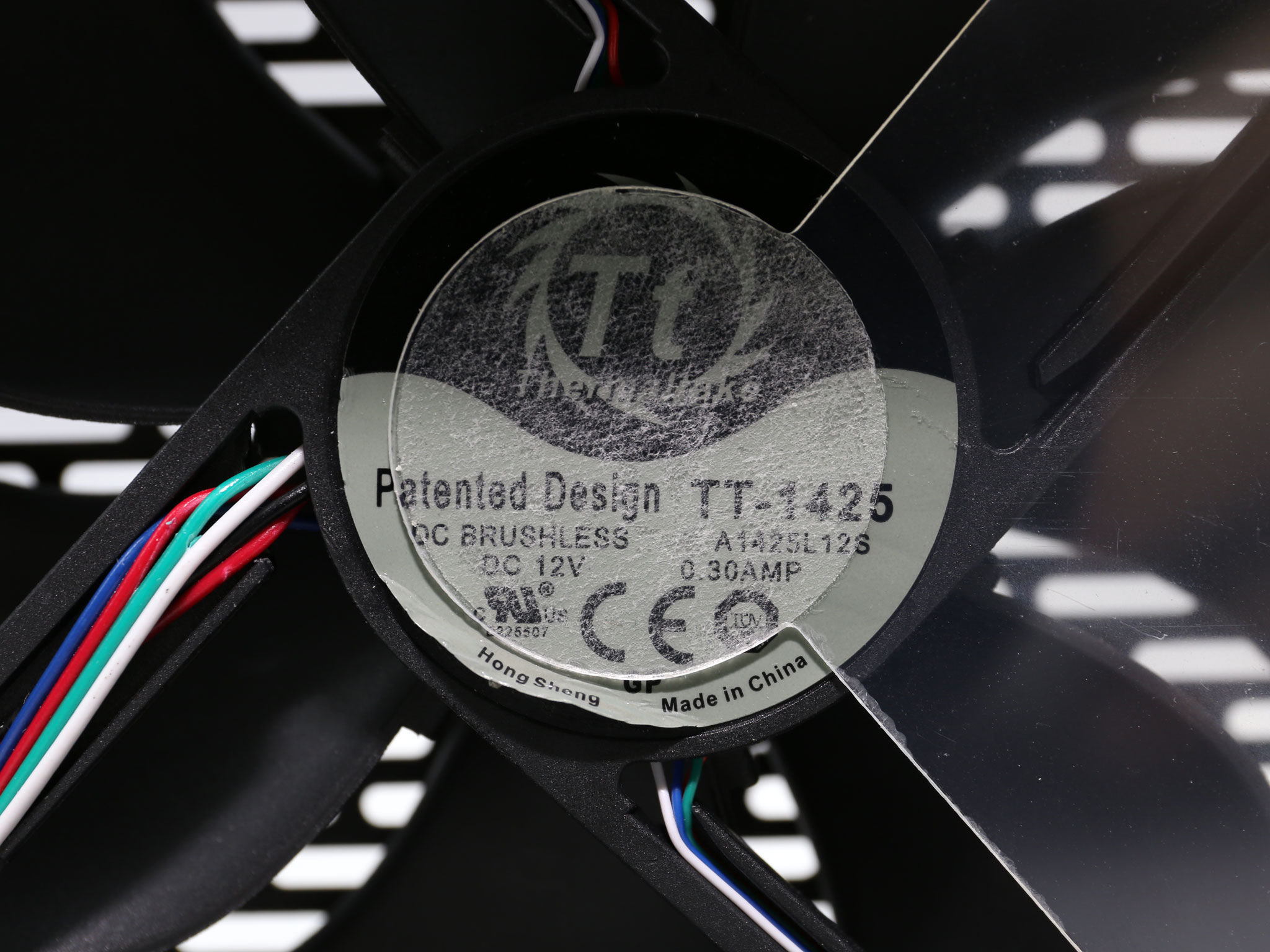
The cooling fan is made by Hong Sheng, and its original model number is A1425L12S. Thermaltake has a model number of its own on the fan's sticker, which is TT-1425.
MORE: Best Power Supplies
MORE: How We Test Power Supplies
MORE: All Power Supply Content
Current page: Teardown & Component Analysis
Prev Page Unboxing Video Next Page Load Regulation, Hold-Up Time & Inrush Current
Aris Mpitziopoulos is a contributing editor at Tom's Hardware, covering PSUs.


